Colour in the garden is incredibly important and many gardeners want a wide range of colours in their borders. However, sometimes you have a specific colour in mind to complete a planting design. Here, experts including Jimi Blake, Mat Reese, Marina Christopher, Tom Brown, Tom Coward and Fleur van Zonneveld have selected their favourite purple flowering plants for the garden.
Purple flowers are an excellent addition to any planting design. With a range of hues running from calming lilacs and lavenders to exciting magentas, no border would be complete without a couple of purple flowers.
You might also be interested in:
- The best white flowers.
55 purple flowers for your garden
Salvia pratensis ‘Indigo’
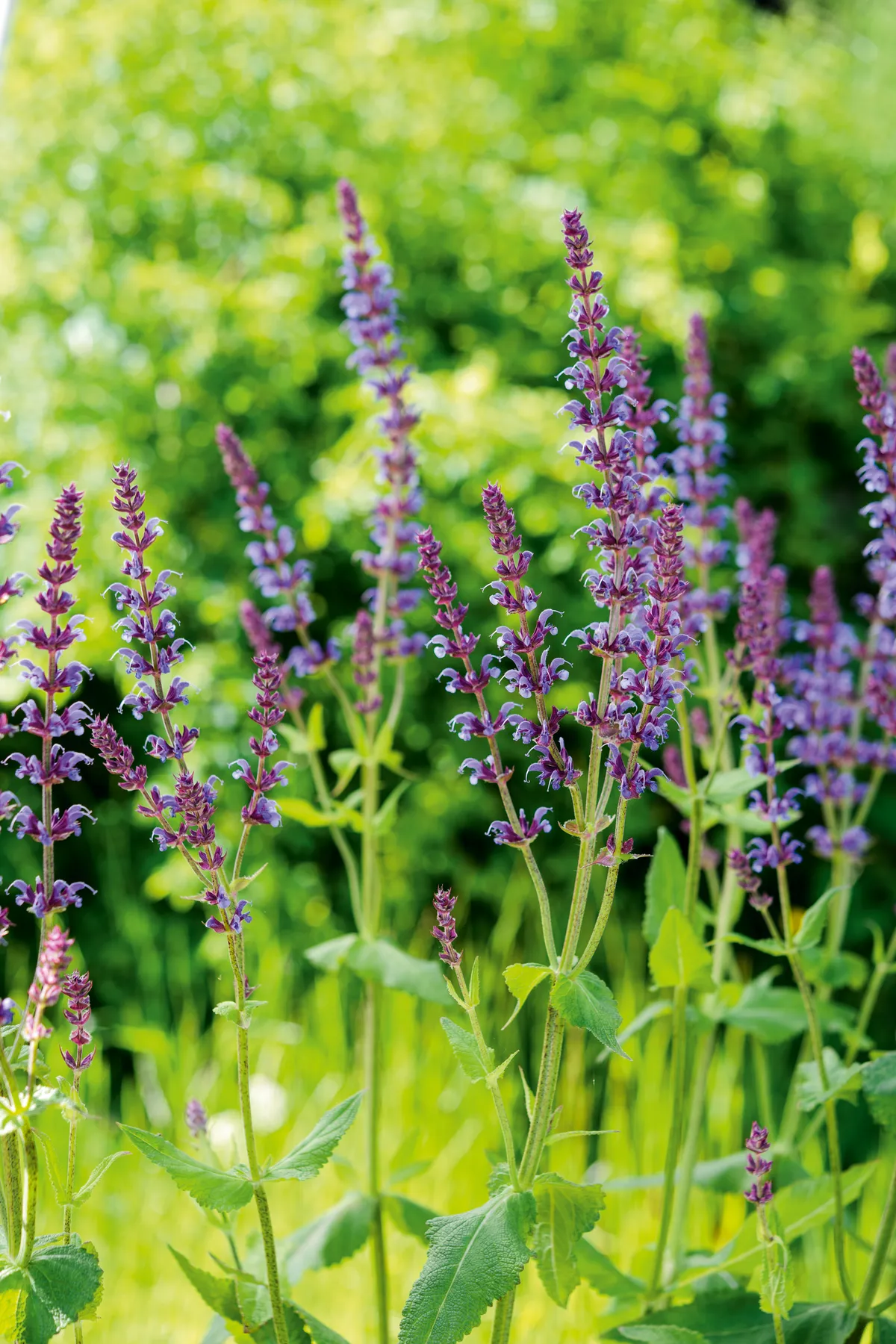
The meadow clary is one of two salvia species native to the British Isles, with blue flowers. In recent years, seed companies have offered a range of colour forms from white and pink to blue and purple. Salvia pratensis ‘Indigo’ was raised by Thomas Carlile at Loddon Nurseries in Twyford, Berkshire. It has a rosette of foliage and rather lax flower stems with a form resembling an upside-down pyramid so its top is wider than its base. The violet-blue, flower spikes are large for this species and very attractive to bees. This cultivar is raised by cuttings. AGM.
Height 90cm Origin Europe Growing conditions Well-drained soil; sun Hardiness RHS H7, USDA 7a-11 Season of interest Summer
Recommended by plantswoman and ecologist Marina Christopher.
Here's more on our favourite salvias
Geranium ‘Orion’
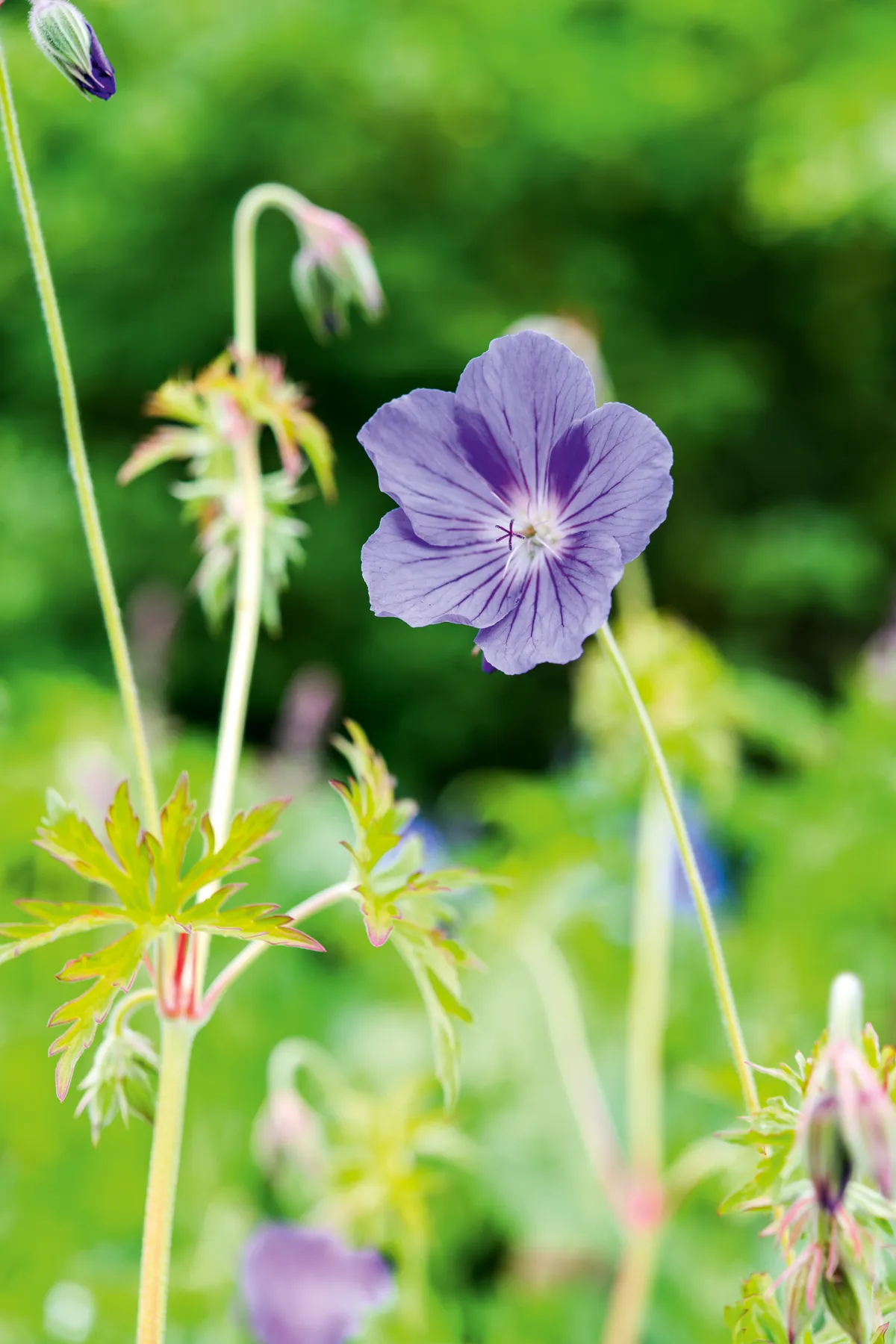
In the late 1990s, Dutch nurseryman Brian Kabbes discovered a seedling of the hardy, mound-forming Geranium ‘Brookside’ (a hybrid between G. clarkei ‘Kashmir Purple’ and G. pratense) that had darker blue and much larger flowers than its parent. Electric purple veins guide insects to the central white disc, which must produce copious nectar as bees are drawn to the blooms in their droves, despite the plant being sterile. It does not produce seed so has an extended flowering season. AGM.
Height 60-75cm. Origin Hybrid raised in the Netherlands. Growing conditions Reasonable soil in sun or dappled shade. Hardiness RHS H7, USDA 5a-9b. Season of interest Late spring to autumn.
Recommended by plantswoman and ecologist Marina Christopher.
Looking for more hardy geraniums?
Baptisia ‘Purple Smoke’
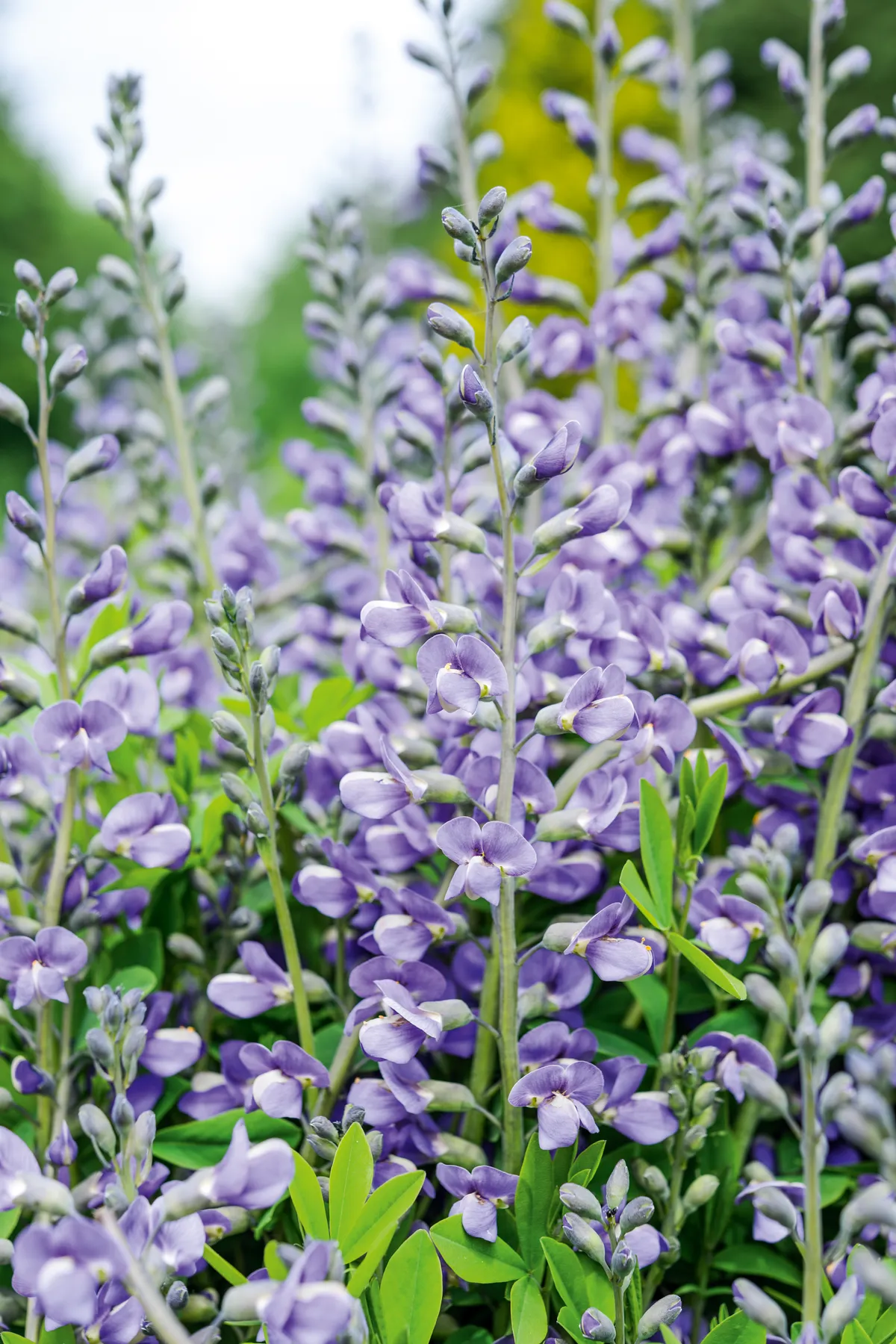
In the mid-1990s there was renewed interest in the genus Baptisia, a member of the pea family, which produces multiple stems with terminal flower spikes in white, yellow, pink, blue and indigo. Most familiar in British gardens is Baptisia australis, a blue-flowered species with upright stems. Baptisia species are promiscuous and the late Rob Gardner of the North Carolina Botanical Garden introduced Baptisia ‘Purple Smoke’ in 1996, a hybrid between B. australis var. aberrans and B. albescens with dark stems and purplish-blue flowers.
Height 1.2m. Origin Eastern North America. Growing conditions Well-drained soil in full sun. Hardiness RHS H7, USDA 3a-9b. Season of interest spring to summer.
Recommended by plantswoman and ecologist Marina Christopher.
Linum narbonense
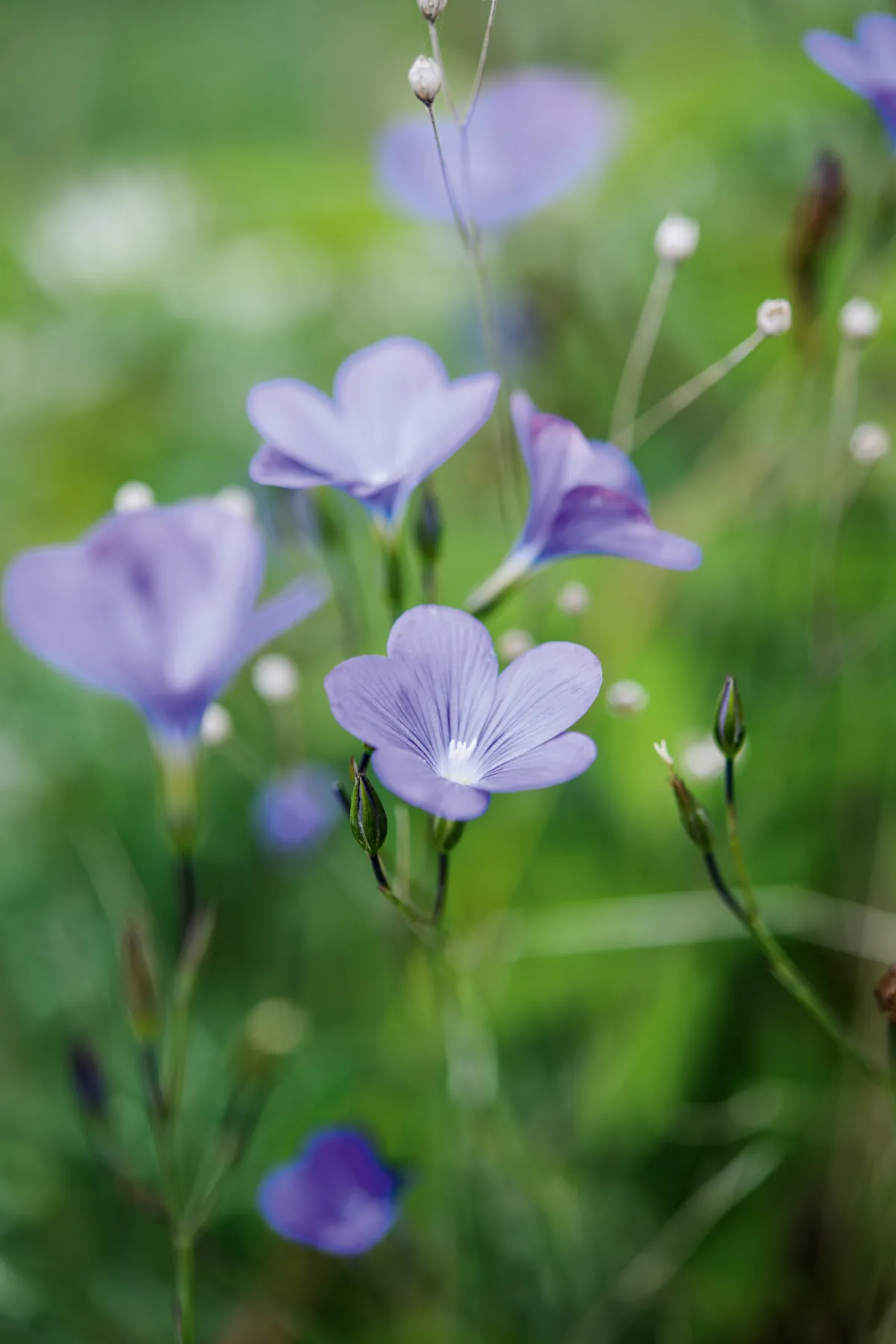
For me, this is the choicest blue flax I have grown. It is not often seen in the trade and inferior plants, possibly Linum perenne, are often sold under its name. It is distinct in holding clusters of upright flower buds, whereas other species have pendent buds. It also has a rather unruly habit, in that its many branches are held at 45-degree angles to the stem giving it a very angular appearance. In sun the large, azure-blue flowers unfurl with darker blue guidelines to lead insects into the funnel-shaped bloom to its clear white eye.
Height 45-60cm. Origin Western and central Mediterranean, northern Spain, northeast Portugal. Growing conditions Well-drained soil; sun. Hardiness RHS H7, USDA 5a-9b. Season of interest late spring to summer.
Recommended by plantswoman and ecologist Marina Christopher.
Tibouchina urvilleana

This conservatory plant does particularly well if given an airing during the warmer months. In our Exotic Garden it yields a continuous display of papal-purple blooms, from velvety buds, arranged in loose panicles. Prune to keep compact and manageable and regenerate new plants from semi-ripe cuttings every three to four years. Cuttings can be taken at any time of year, though summer is best. Bring back indoors before the first frost and pot on into a good loam-based compost. A good cut flower, but beware, the fallen petals can stain.
Height 2m. Origin Brazil. Conditions Full sun in a summer garden; winter in conservatory. Hardiness RHS H2, USDA 9a-11. Season Year round.
Recommended by head gardener Mat Reese.
Ipomoea 'Caprice'

I trialled several morning glories last year and they were surprisingly variable in their performance, but this was one of the best blues. Strong growth covered my 2m-high obelisk in foliage and pale-blue flowers erupted all over this plant. It was quite a spectacle, especially alongside some of the less floriferous forms. Avoid over feeding or you’ll end up with lots of leaf and only a few flowers, but other than that, in a sunny position, ipomoeas will provide lots of colour and interest well into the summer and cover up some of those less attractive fences.
Height 1.5-2.5m. Origin Garden origin (species from Mexico). Conditions Moist and well-drained soil; full sun. Hardiness RHS H1C, USDA 9a-11. Season of interest July – October.
Recommended by head gardener Tom Brown.
Iris unguicularis 'Mary Barnard'
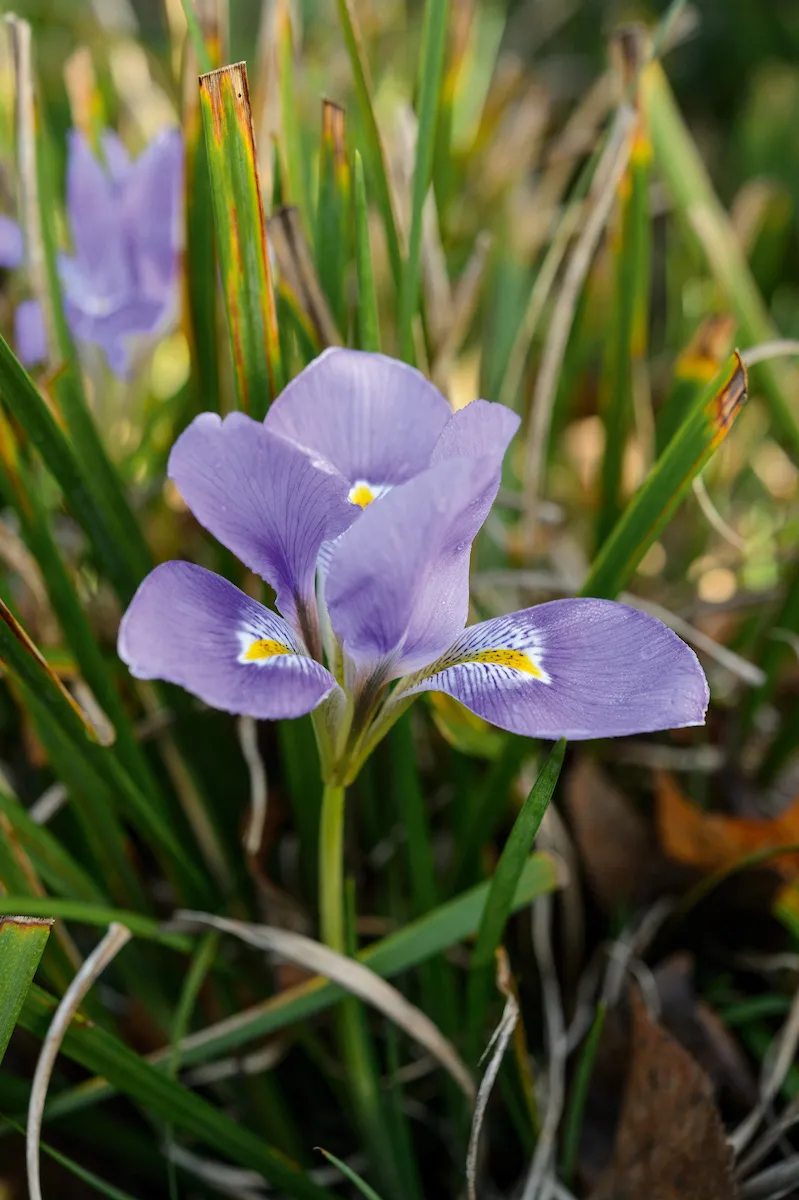
I’m always amazed at how tolerant of incredibly poor and sun-baked positions this species of iris can be. Often, they hug walls and enjoy a roasting during the summer and then reward us in winter with large, violet flowers that have contrasting yellow signals. Flowering in December isn’t without its challenges, but by planting against a sunny wall, you reduce the impact of the hard frosts, which can damage the freshly emerged flowers. If flowers are hit by the frost, many more soon appear. AGM.
Height 50cm. Origin Garden origin (species from eastern Mediterranean and North Africa). Conditions Free-draining soil; a sheltered position in full sun. Hardiness RHS H5. Season of interest December – February.
Recommended by head gardener Tom Brown.
Rosa 'Veilchenblau'
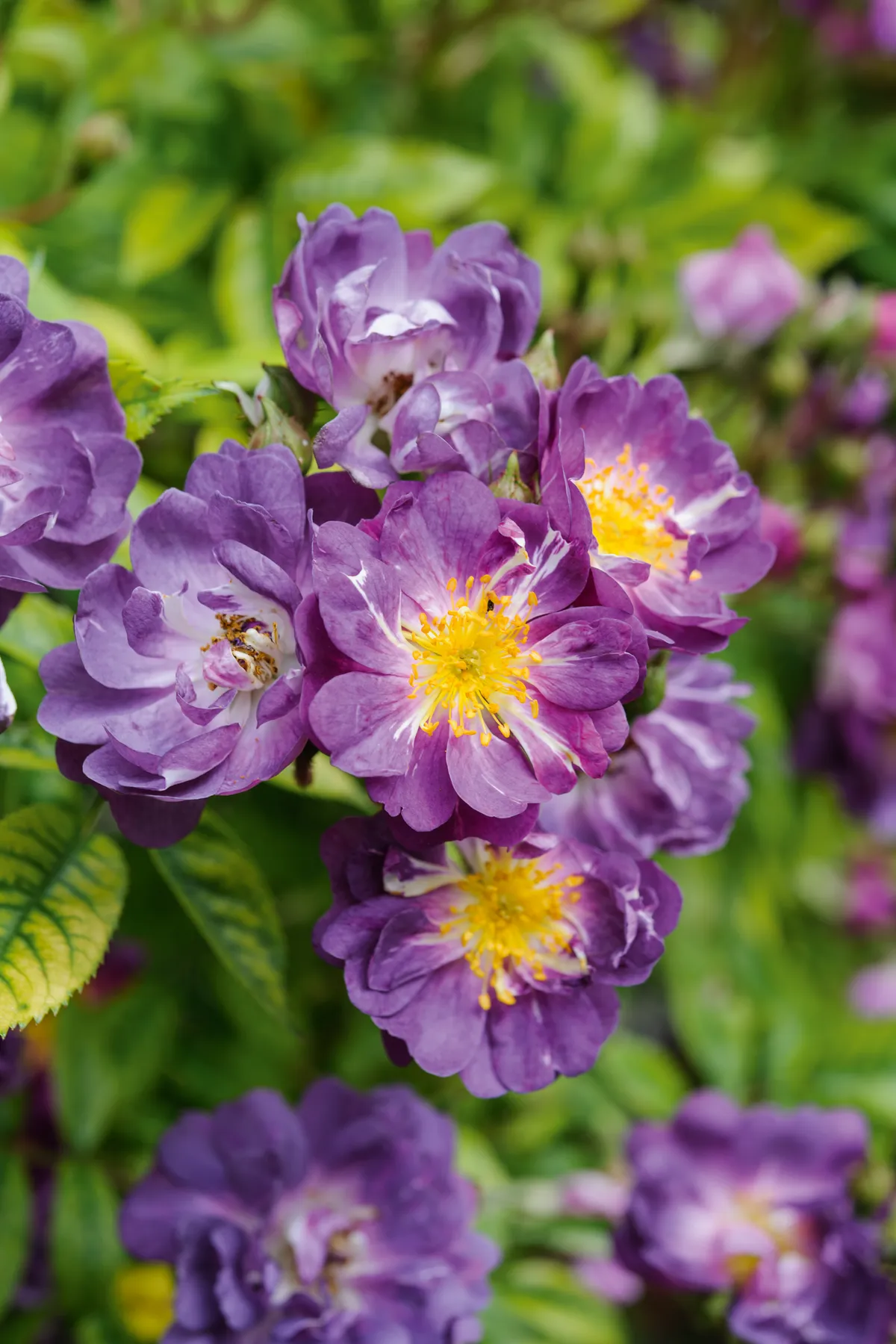
I adore this rose not just for its unusual tones of violet-purple and its fruit-scented flowers but for its well-mannered, graceful habit, trained on a wall or fence. Classed as a rambler, this rose is well behaved and not too vigorous, like some rambling roses. A superb flush of flowers appear in early summer and into July, which prove to be quite a talking point when in full swing. I find this rose incredibly versatile in the garden, working well with various colour schemes and associating nicely with most plants. AGM.
Height 2.5m. Origin Garden origin. Conditions Moist, free-draining soil; full sun. Hardiness RHS H7, USDA 5a-9b. Season of interest May – June.
Recommended by head gardener Tom Brown.
Here's more roses to grow
Campanula ‘Kent Belle’
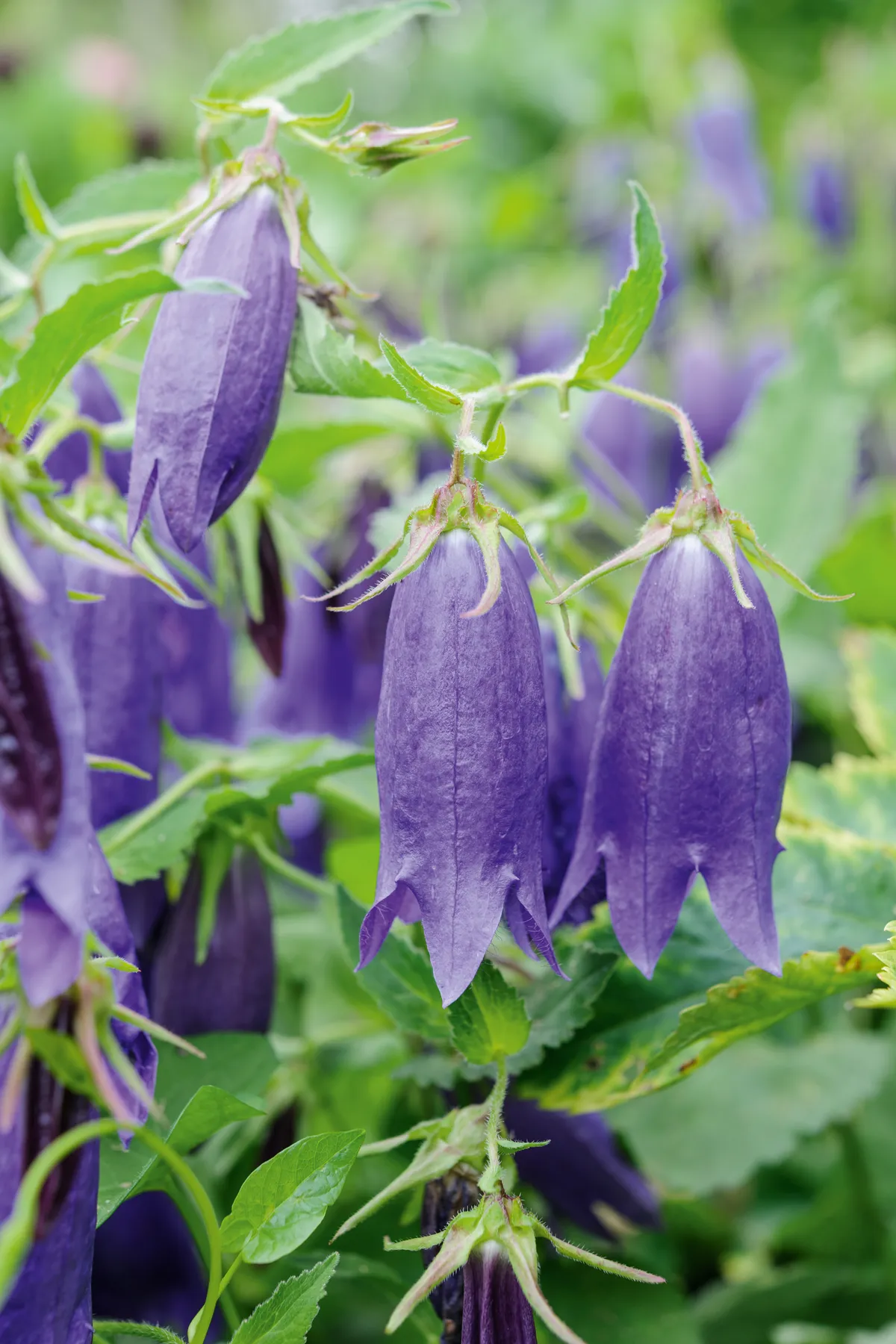
This Campanula impresses me on many levels; there’s the sheer size of its blooms and the dark intensity of its midnight blue, bell-like flowers, and that’s just for starters. As with most campanulas, ‘Kent Belle’ enjoys a fertile and moisture-retentive soil in the summer and for best results it also needs reasonable light levels. The weight of the clusters of flowers can become heavy for the plant, so support with a little birch or hazel to showcase the blooms to maximum effect. Reliably perennial and deserved of its Award of Garden Merit. AGM.
Height 1m. Origin Hybrid of C. takesimana and C. latifolia. Conditions Moist in summer but well-drained soil; full sun. Hardiness RHS H7, USDA 5a-9b. Season of interest June – July.
Recommended by head gardener Tom Brown.
Looking for more about campanula?
Pulmonaria ‘Blue Ensign’
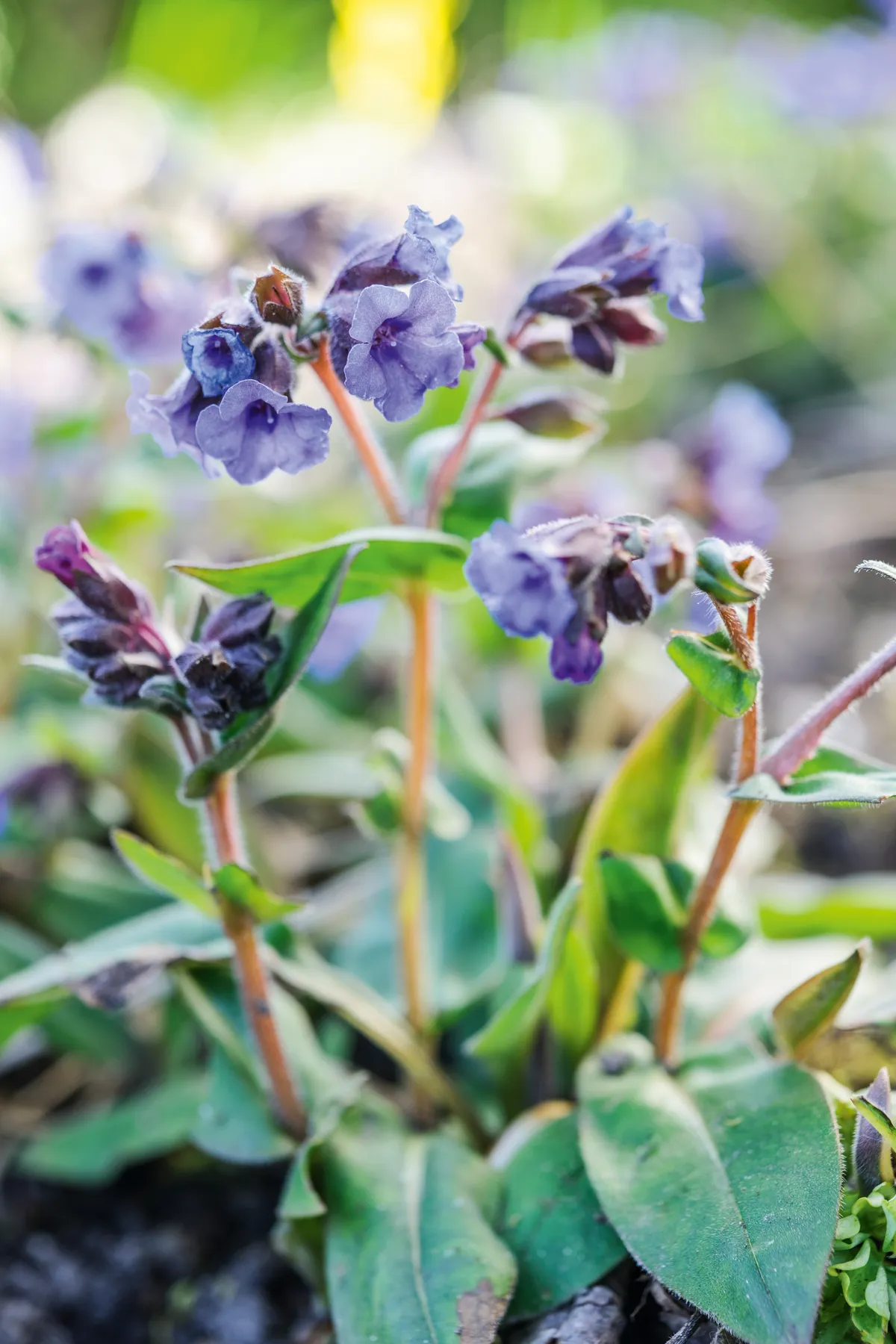
Pulmonaria ‘Blue Ensign’ is one of the best lungworts, producing mounds of smart, spring-green leaves topped with sprigs of rich, violet-blue flowers. It thrives in shady conditions and performs at a time of year when there is a dearth of colourful options. Use it under the skirt of a deciduous shrub or in swathes between summer-growing perennials. It will be quite happy under the summer canopy, and although it may look tired by this time of year, it will reappear in spring with gusto. AGM.
Height 10-30cm. Spread 40cm. Origin Garden origin. Conditions Most good garden soils; can take dry summer shade once established. Hardiness RHS H6, USDA 3a-8b. Season Spring.
Recommended by head gardener Mat Reese.
Camassia leichtlinii subsp. suksdorfii Caerulea Group

A genus of bulbous plants from the asparagus family, comprising five species from North America and one from South America. In the Pacific North West they were an important food for native Americans; the bulbs having a sweet taste when roasted. This Camassia has beautiful, star-shaped, dark-blue flowers on tall stems and is one of the earliest to flower. It works well among shrubs and in borders but is best in meadows. In the orchard it times perfectly with the apple blossom.
Height and spread 1-1.5m x 30cm. Origin British Columbia, Washington, Oregon, California and parts of Nevada. Conditions Prefers moist soil; full sun to part shade. Hardiness RHS H4, USDA 5a-9b. Season of interest April to May.
Recommended by head gardener Tom Coward.
Here's everything you need to know about camassia
Hesperis matronalis

Our first sweet rocket was grown from a free seed packet on Gardens Illustrated, and it has gone on to become one of our best-loved performers. Its clouds of mauve flowers work well with the vertical lines of wisteria and lupins and truly come into their own in the evening light. The Greek god Hesperus was known as the Evening Star, and evening is when the perfume of sweet rocket is at its best, filling the garden with its scent just in time for drinks. We sow in July and grow on in pots for autumn, placing plants where they will flower the following year. Chef also likes to use it as an edible flower.
Height and spread 1m x 1m. Origin Native to Eurasia. Conditions Moist but well-drained loam or sand; full sun or part shade. Hardiness RHS H6, USDA 3a-8b. Season of interest May to June.
Recommended by head gardener Tom Coward.
Salvia ‘Phyllis’ Fancy’

Versatile sages can grow in almost every garden microclimate and, with more than 900 species and many hundreds of cultivars, the choice is staggering. This tender hybrid was found as a seedling in the University of California’s Santa Cruz Arboretum and named after Phyllis Norris, a volunteer there. Incredibly vigorous, it can easily compete with tall grasses and herbaceous perennials, flowering late in the season with fuzzy, white-flushed, pale-lavender flowers set off by dark-purple calyces. Strong, arching growth produces fountains of flower spikes.
Height 1.5-2m. Origin Spontaneous hybrid of possibly S. leucantha x S. chapalensis. Growing conditions Moisture-retentive soil; sun or dappled shade. Hardiness RHS H3, USDA 7a-9b. Season of interest Late summer – autumn.
Recommended by plantswoman and ecologist Marina Christopher.
Succisa pratensis
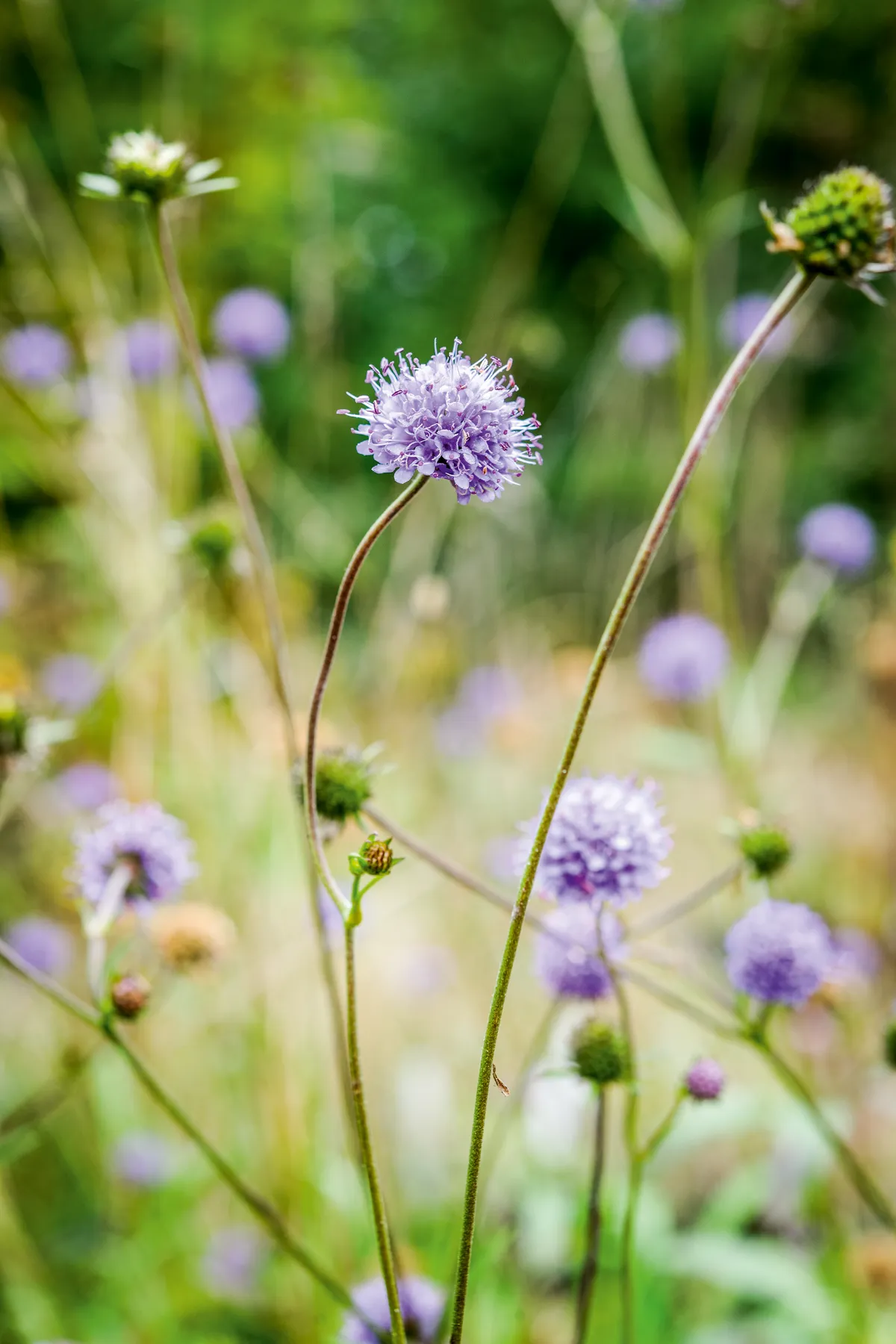
The devil’s bit scabious has to be one of my favourite late-summer plants. It has long, wiry stems topped with rounded, bluish-purple flowers, which are caviar to bees and butterflies alike. A garden photographer once complained that she was unable to take a photograph of a flower head without an insect landing on it. It is a British native and grows almost anywhere, in sun or dappled shade, in acid or alkaline soils and will tolerate moist or fairly dry sites. Wonderful with tall ornamental grasses, such as Panicum, adding small dots of colour.
Height 60cm-1.2m. Origin Europe, western Asia. Growing conditions Most soils; sun or dappled shade. Hardiness RHS H7, USDA 5a-9b. Season of interest Late summer – autumn.
Recommended by plantswoman and ecologist Marina Christopher.
Helleborus x hybridus 'Queen of Spades'
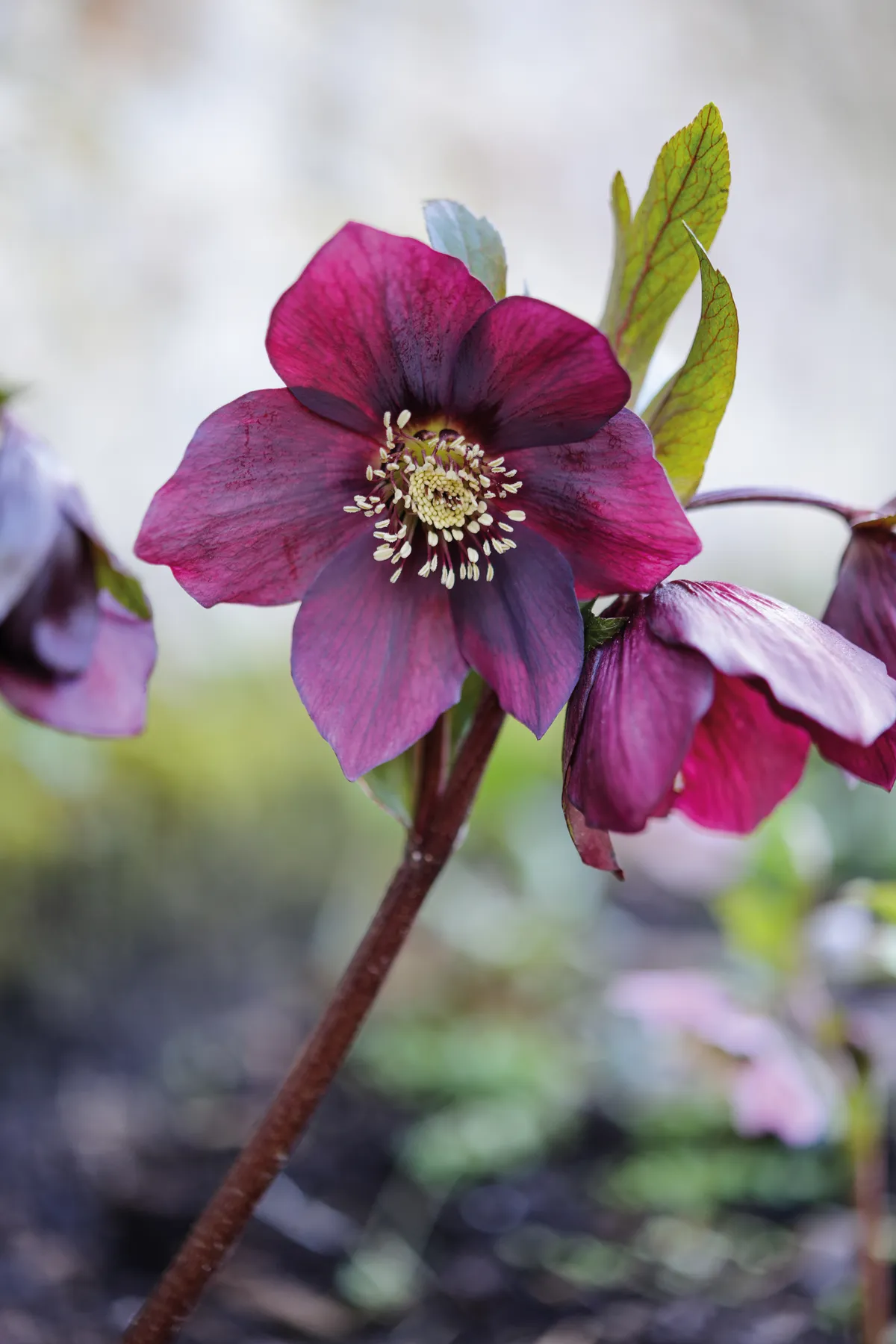
I always look forward to seeing hellebores. Recent breeding has ensured there is now a full spectrum of colour to provide the perfect late-winter pick me up. Dark-purple hellebores associate beautifully with pale-pink cultivars as well as with snowdrops and Cyclamen coum in borders and pots. Remove old leaves around Christmas and mulch with leaf mould, you’ll be able to appreciate the flowers unhindered. These will be followed by fresh leaves and, if you’re lucky, new seedlings later in the summer.
Height 30-45cm. Origin Garden. Conditions Rich, well-drained soil; part shade. Hardiness RHS H7. Season of interest February to April.
Recommended by head gardener Tom Brown.
Looking for more on hellebores?
Crocus 'Ladykiller'
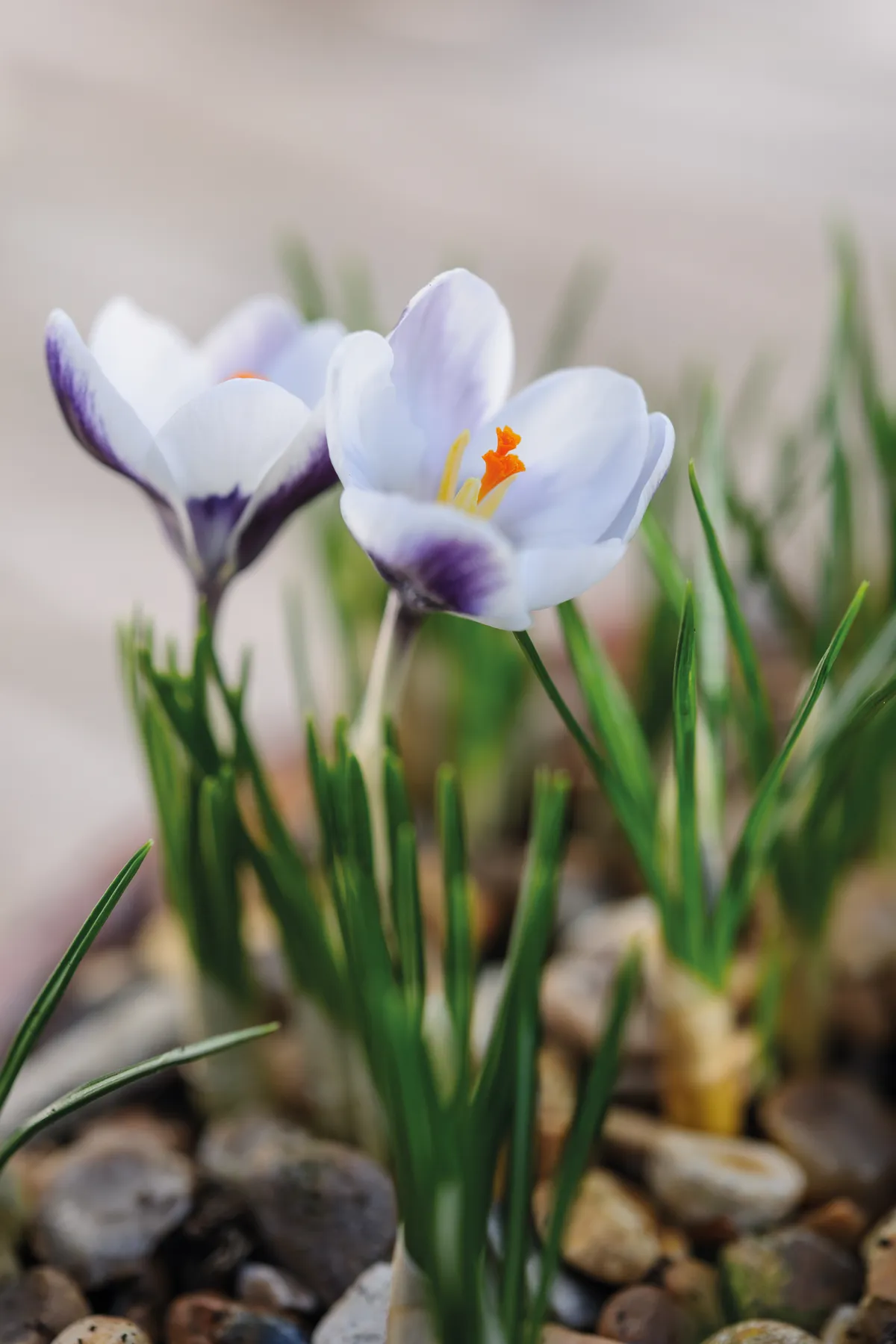
Some flowers you can enjoy en masse; others should be individually savoured. A case in point is this exquisitely detailed crocus with pure-white flowers that have a rich, dark-purple flash of colour on the underside. Each flower’s vibrant orange stamens simply add to its intensity. I generally grow these bulbs in pots, topped with gravel, which brings the blooms off the ground so you can enjoy them up close. Plant them densely to ensure a full display and once they’ve flowered, allow them to go dormant or plant in your garden for future years.
Height 10cm. Origin Garden. Conditions Well-drained, gritty soil; sun. Hardiness RHS H6. Season of interest Late winter to early spring.
Recommended by head gardener Tom Brown.
Here's everything you need to know about crocus
Thalictrum delavayi var. decorum

This beautiful summer-flowering perennial is native to Yunnan in China and only slowly becoming available in the trade. It has fine foliage followed by sprays of lavender flowers on long stems through the summer months. It is a much more suitable plant for most gardens than the taller forms, such as T. ‘Elin’. I propagate this one from fresh seed sown in the autumn, as I do with all the Ranunculaceae family. The seedlings are slow to bulk up, but are worth the wait. I divided the original plant this spring.
Height 1-1.5m. Origin Yunnan, China. Conditions Moist but well-drained soil; full sun to semi-shade. Hardiness RHS H7. Season of interest June to July for flowers.
Recommended by plantsman and owner of Huntingbrook Gardens, Jimi Blake.
Don't miss our guide to Thalictrum
Corydalis 'Korn's Purple'

I have become something of a fanatic for Corydalis. This one comes from Peter Korn in Sweden and is one of the best in my collection. It is a cross between C. flexuosa and C. capitata. It grows upright for me and has purple flowers with a white centre. I am planting my Corydalis collection in my new woodland beds with snowdrops, epimediums, trilliums and podophyllums. Keep the soil moist, otherwise it will stop flowering and eventually disappear. I propagate it by division in the autumn.
Height 35cm. Origin Garden (species China). Conditions Moisture-retentive, humus-rich soil; dappled shade. Hardiness RHS H5. Season of interest Spring to early summer for flowers.
Recommended by plantsman and owner of Huntingbrook Gardens Jimi Blake.
Here are other perfect corydalis
Agapanthus 'New Blue'
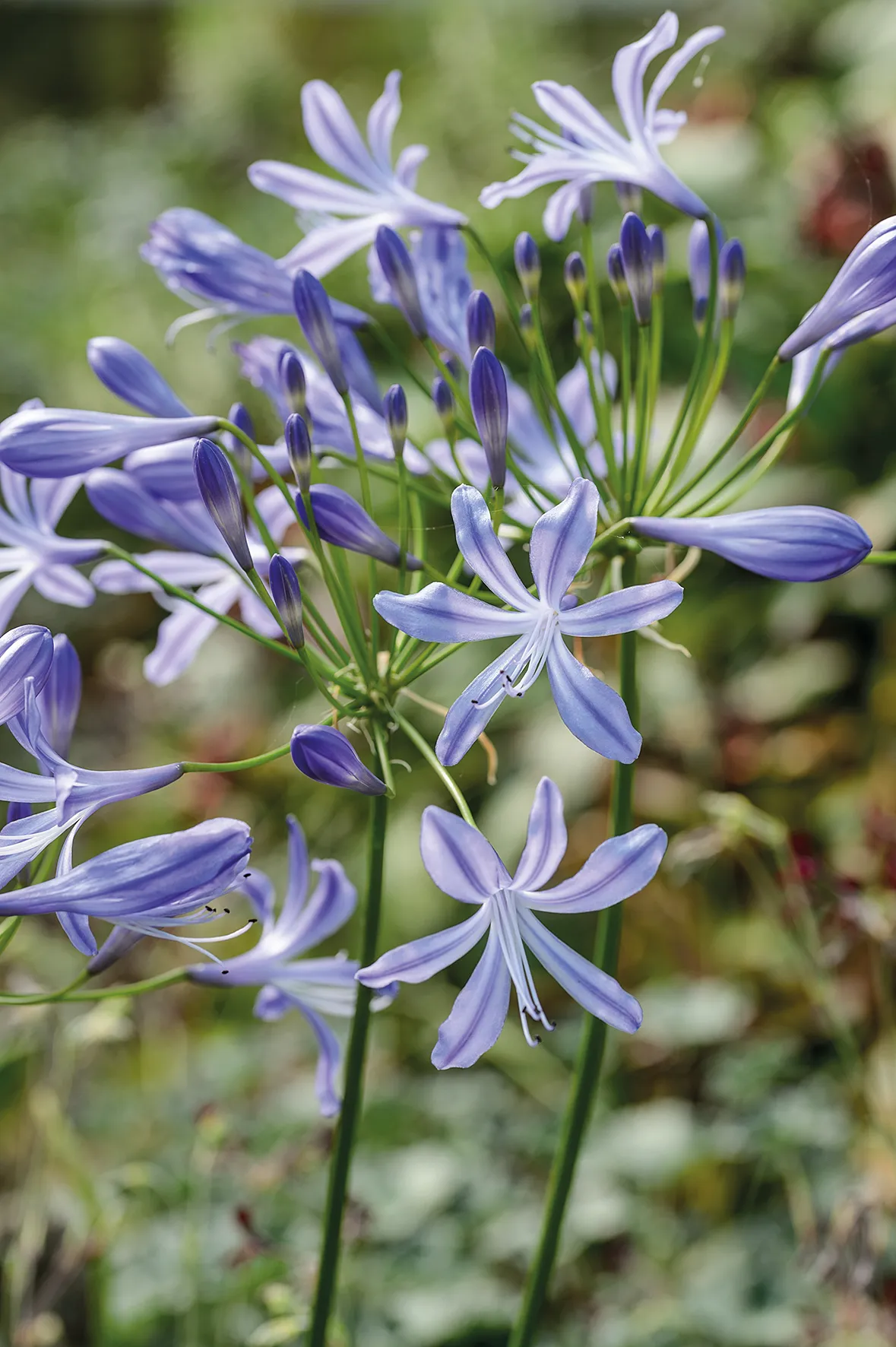
It may not be reliably hardy, but I love this Agapanthus for its large, flat flowers that are widely spaced in the flowerhead, producing a distinctive flower shape that appears to be more reminiscent of a blue-flowered nerine than an agapanthus. It is also one of the last to flower for me, which further enhances the autumn-flowering nerine similarity. Not surprisingly I grow mine with early flowering nerines, such as Nerine undulata Flexuosa Group.
Height 60cm. Origin Garden (species South Africa). Conditions Well-drained, moisture-retentive soil; full sun. Hardiness RHS H4, USDA 7a-9b. Season of interest Early autumn.
Recommended by plantsman and owner of Wildside, Keith Wiley.
Looking for more about agapanthus?
Allium senescens subsp. glaucum

I must admit I’ve not experimented with alliums as much as I should. This is partly because many of those I like are bulbous and because I think of these, illogically perhaps, as plants that are difficult to grow successfully with minimal maintenance in a crowded border. This allium, however, is smaller and perennial, and one for growing in a rock garden or among lower-growing, widely spaced neighbours. Its grey-blue leaves are slightly curled, and its flowers are an absolute magnet for tortoiseshell butterflies – we once counted 14 on a plant 20cm across.
Height 20cm. Origin Mongolia, Siberia. Conditions Well-drained soil; full sun. Hardiness RHS H6, USDA 4a-9b. Season of interest Summer.
Recommended by plantsman and owner of Wildside, Keith Wiley.
Here's how to grow alliums
Aster x frikartii 'Mönch'
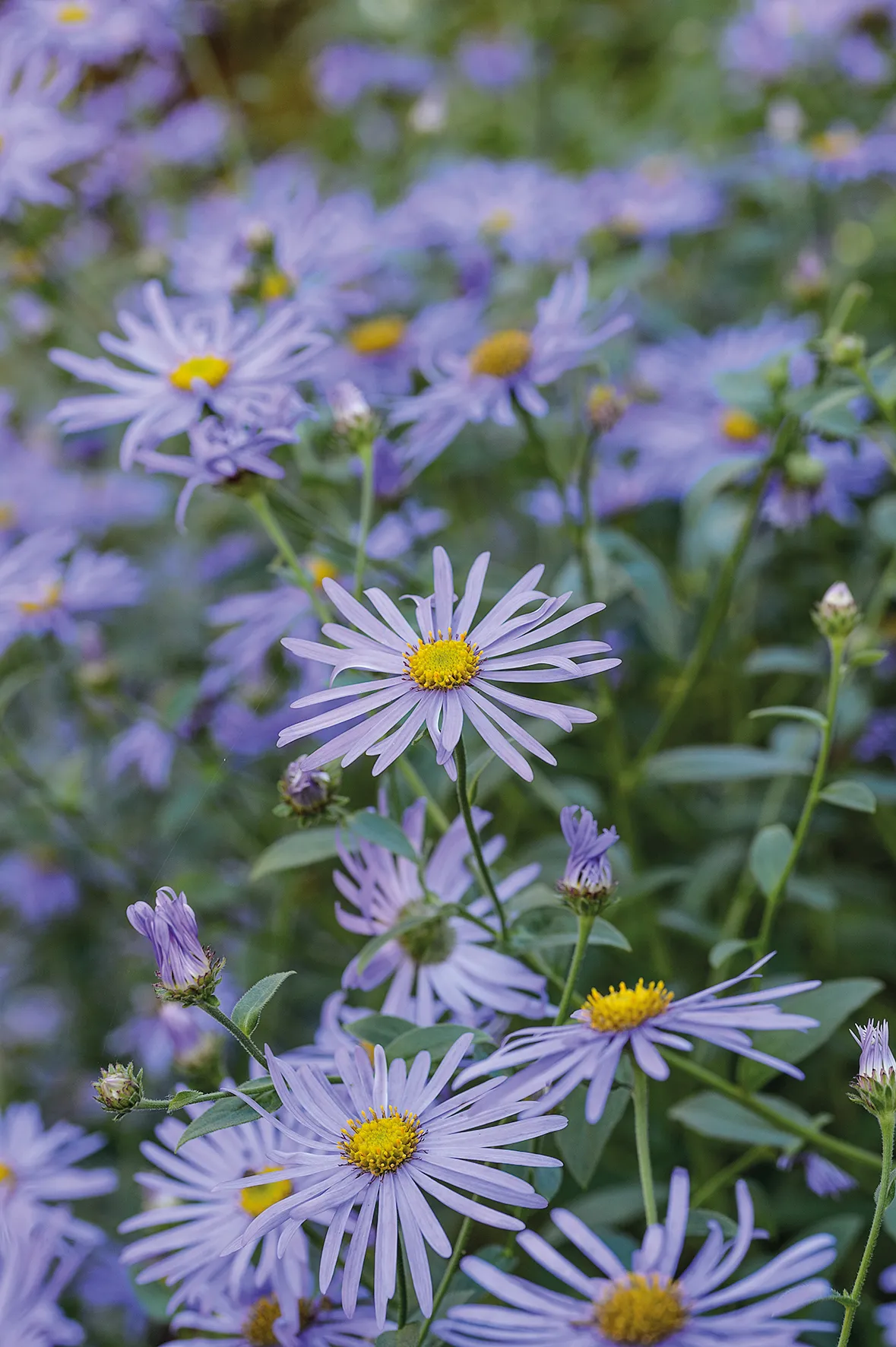
Michaelmas daisies have always been popular and over a very long history, breeders have produced many hundreds of different and exciting cultivars. There can be few, however, that have stood the test of time better than this one, bred by a Swiss nurseryman more than 100 years ago. With large flowers of a good lilac blue and central boss of yellow stamens it is one of the first to flower in the late summer and remains in flower for many weeks – much longer than most other types. A wonderful mixing colour and still one of the very best. AGM.
Height 90cm-1.2m. Origin Garden origin. Conditions Any soil; full sun to part shade. Hardiness RHS H7, USDA 5a-10b. Season of interest Summer to autumn.
Recommended by plantsman and owner of Wildside, Keith Wiley.
Don't miss our guide to Michaelmas daisies
Crocus tommasinianus ‘Whitewell Purple’

There’s often a dearth of colour in the garden in February, which makes these naturalising crocuses all the more special. They will seed through turf to such a degree as to make thick carpets of gaping flowers whenever the sunshine calls. The flowers expand from silvery quills in early February, and will continue well into March. They prefer sunny, open ground but will make do with light, deciduous shade. Use a bulb planter to remove cores of soil and then plant the corms 5cm deep.
Height 10cm. Spread 3cm. Origin Hungary, Bosnia, Montenegro, northwest Bulgaria. Conditions Any soil; sun or part shade. Hardiness RHS H6, USDA 3a-8b. Season Late winter to early spring.
Recommended by head gardener Mat Reese.
Asperula orientalis

A versatile and easy annual for the flower garden. The wiry plants make mounds of spring-green foliage peppered with clusters of small, scented, blue flowers. Seed can be sown in the autumn and grown for the spring or sown in the spring for flowering later in the year. It has a very gentle habit and it won’t compete with developing perennials, which can be a problem with forget-me-nots. I thread plants through bare gaps between perennials in early spring, and couple them with tulips. Doesn’t like heavy, wet soils, but is otherwise quite amiable.
Height 35cm. Spread 40cm. Origin Europe into Asia. Conditions Any good soil that isn’t saturated. Hardiness RHS H4, USDA 4a-9b. Season Spring into summer.
Recommended by head gardener Mat Reese.
Rhododendron augustinii 'Lanarth Green Eye'
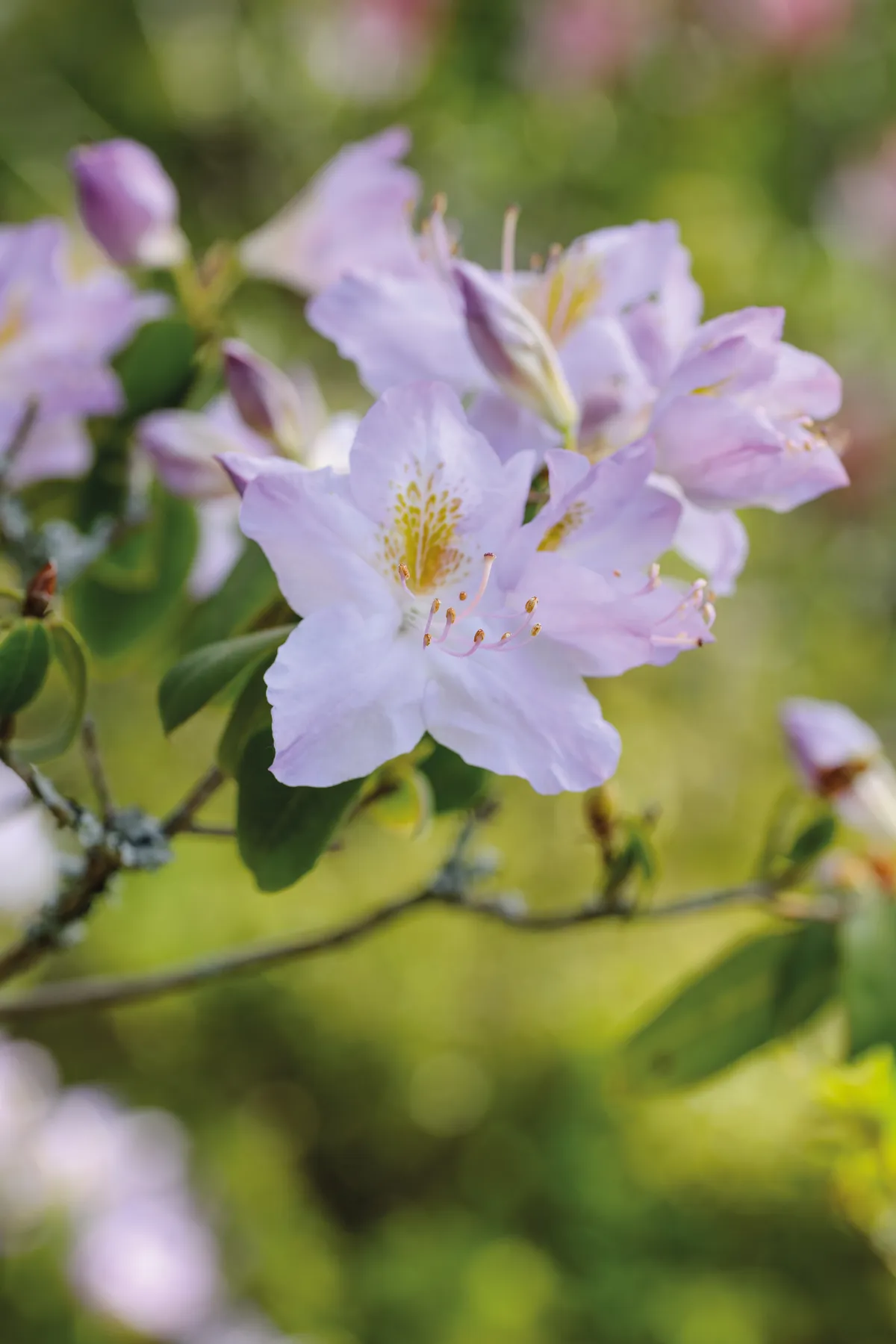
As this is a species that flowers in April, it is one that is vulnerable to spring frosts although it will tolerate a degree or two of frost without flower damage. If you have the space to accomodate it then it really is one of the glories of the woodland garden. It’s a species that can vary widely in colour from pale purple to rose purple in the wild, to near blues in cultivation. Over the years I have grown many colour forms, but I still most cherish this paler incarnation selected from a plant growing in the Cornish garden of its name.
Height 2-3m. Origin Garden origin (species China). Conditions Acidic soil; partial shade. Hardiness RHS H4, USDA 5a-9b. Season of interest Spring.
Recommended by plantsman and owner of Wildside, Keith Wiley.
Looking for rhododendron inspiration?
Monarda 'On Parade'
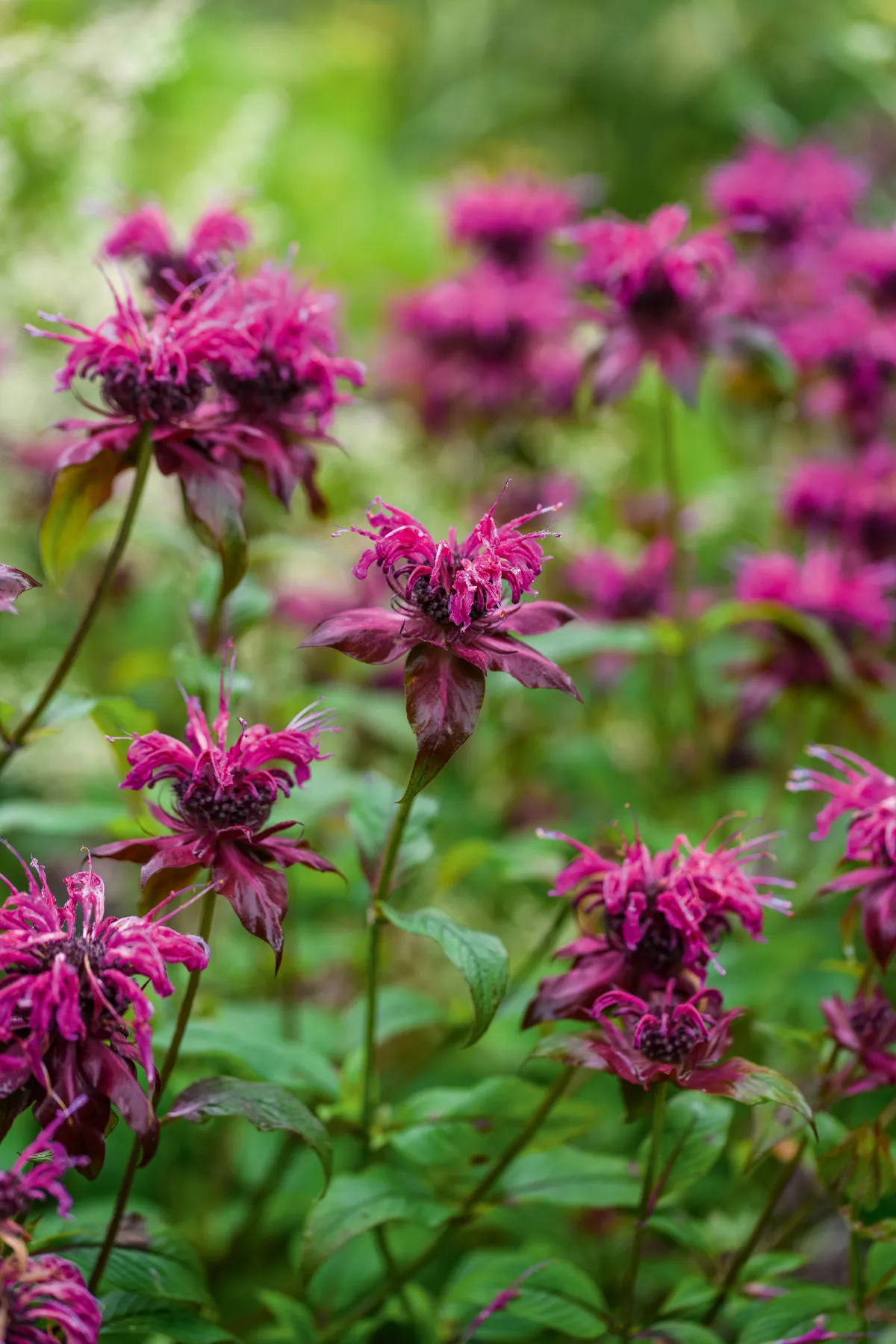
Monarda is a genus I trialled at Hunting Brook a few years ago. Monarda ‘On Parade’ was one of the winners of this trial and is still a superior perennial in my main border for late colour. This is a Canadian selection that bulks up quickly and thrives on my rich, heavy, clay soil. It has fuchsia-pink to magenta flowers, and the carmine-pink bracts under the flowers prolong its season of interest. Monardas often get mildew, generally because of drought, but this cultivar has always been mildew-resistant with me. I propagate it by division in spring.
Height 1.2m. Origin Garden (species North America). Conditions Rich, heavy, clay soil that retains moisture; full sun. Hardiness RHS H4. Season of interest July to September for flowers.
Recommended by plantsman and owner of Hunting Brook Gardens Jimi Blake.
Phytolacca icosandra Purpurascens Group
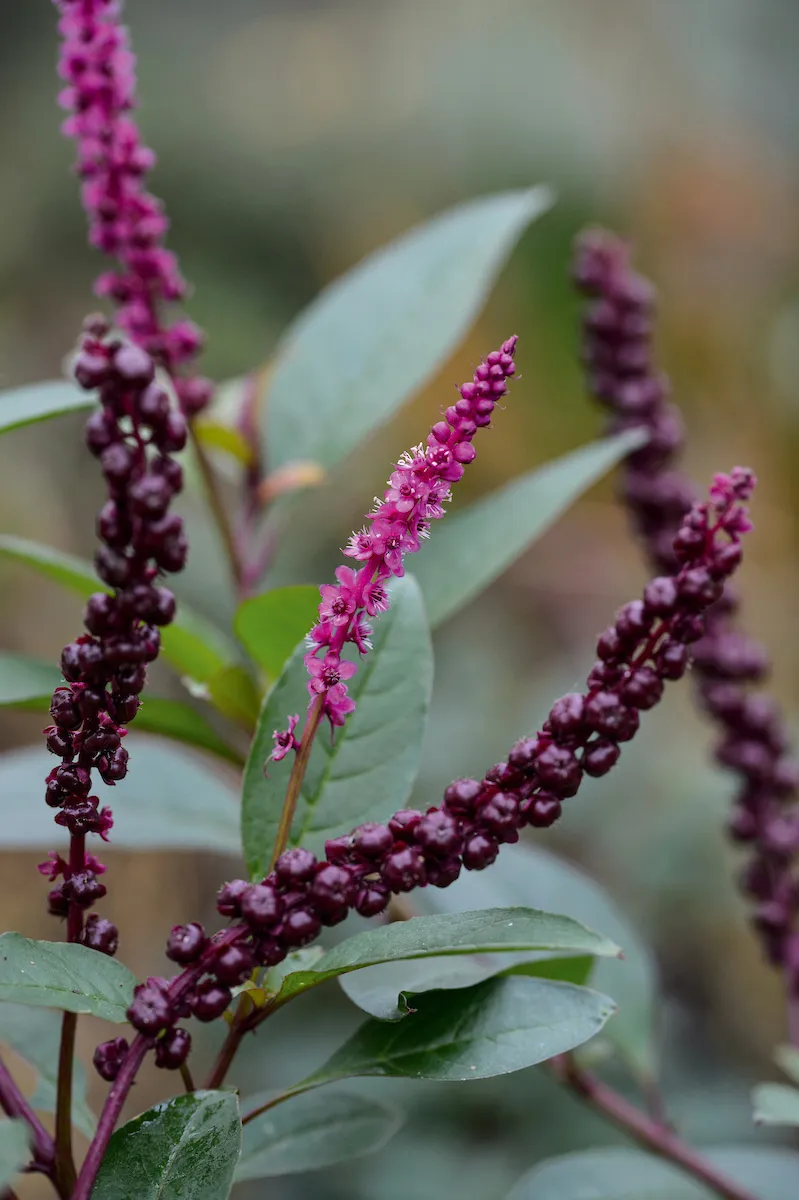
With crimson stems, purple-flushed foliage and months of bright-magenta flowers and crimson-black seeds it is hard to disagree with Crûg-Farm’s description of its collection of this plant in Sumatra as an ‘outstandingly colourful form of this species’. Generally not hardy so I try to keep one plant growing under light protection, but even if this fails seedlings nearly always appear the following spring. I was recently told of this species surviving several winters unscathed in the London area, so I must experiment a little more with it.
Height 1.5-2m. Origin Central America and northern parts of South America, and widely naturalised worldwide. Conditions Well-drained soil; full sun. Hardiness RHS H3, USDA 9a-11. Season of interest Summer to autumn.
Recommended by plantsman and owner of Wildside, Keith Wiley.
Daphne bholua ‘Mary Rose’
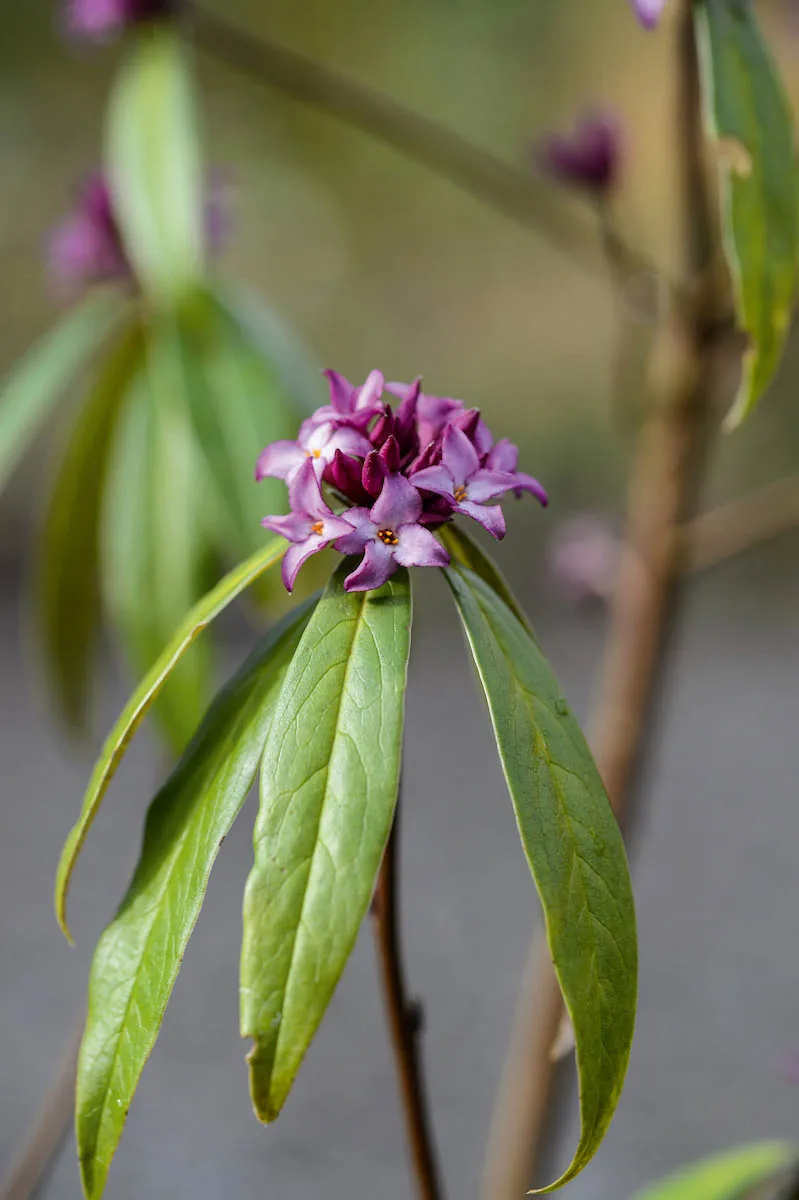
I always make a yearly pilgrimage to Pan-Global Plants in Gloucestershire where I found this absolute gem of a daphne. The deep-purple buds form in December to January and then open to deep-pink flowers in February and March. The flowers have a delicious scent, which I adore on my early morning walks at this time of year. This daphne has an upright growth habit that makes it easy to fit into most gardens. When you’re planting any daphne please remember to plant it where it will stay as all daphnes resent transplanting.
Height 2-3m. Origin Garden (species eastern Himalaya). Conditions Well-drained soil; sun or semi shade. Hardiness RHS H4. Season of interest Winter to early spring.
Recommended by plantsman and owner of Hunting Brook Gardens, Jimi Blake.
Here's our guide to growing daphne
Euphorbia mellifera
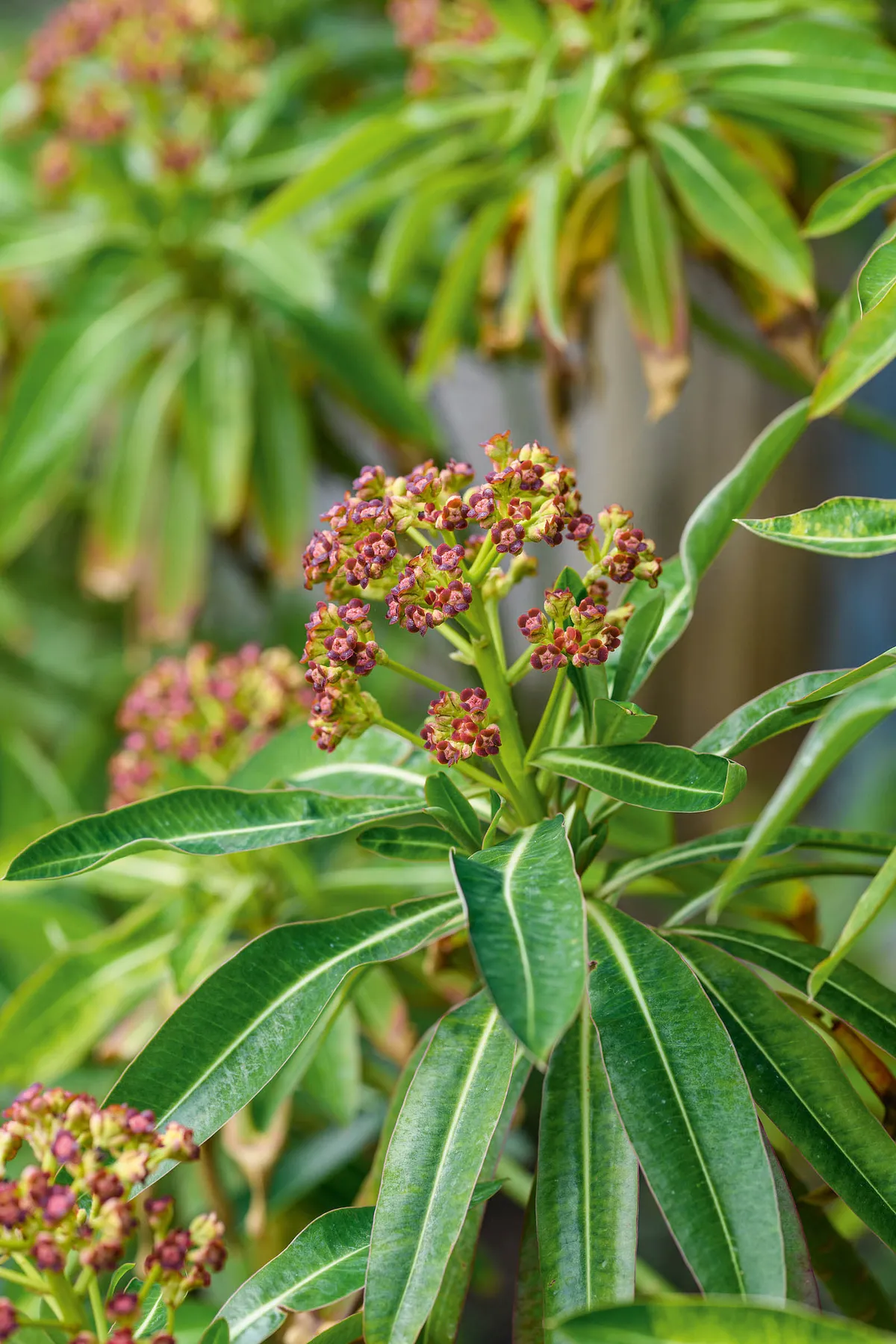
At Gravetye this stately, easy-to-grow euphorbia has been evergreen for the past ten years. Only in the coldest winters will it die back and behave like a herbaceous perennial, although it will always perform better in a sheltered spot. Its slender, waxy leaves with a pale mid vein, give very good effect as a foliage plant. In April to May it flowers and has the most beautiful honey scent, from which its name derives. It is drought tolerant and an extremely useful plant for dry shade. AGM.
Height and spread 1.5-2.5m x 1.5-2.5m. Origin Madeira and the Canary Islands. Conditions Well-drained soil in a sheltered position; full sun or dry shade. Hardiness RHS H3, USDA 8b-9b. Season of interest April – May (flowers), year-round (foliage).
Recommended by head gardener Tom Coward.
Rhododendron augustinii subsp. chasmanthum
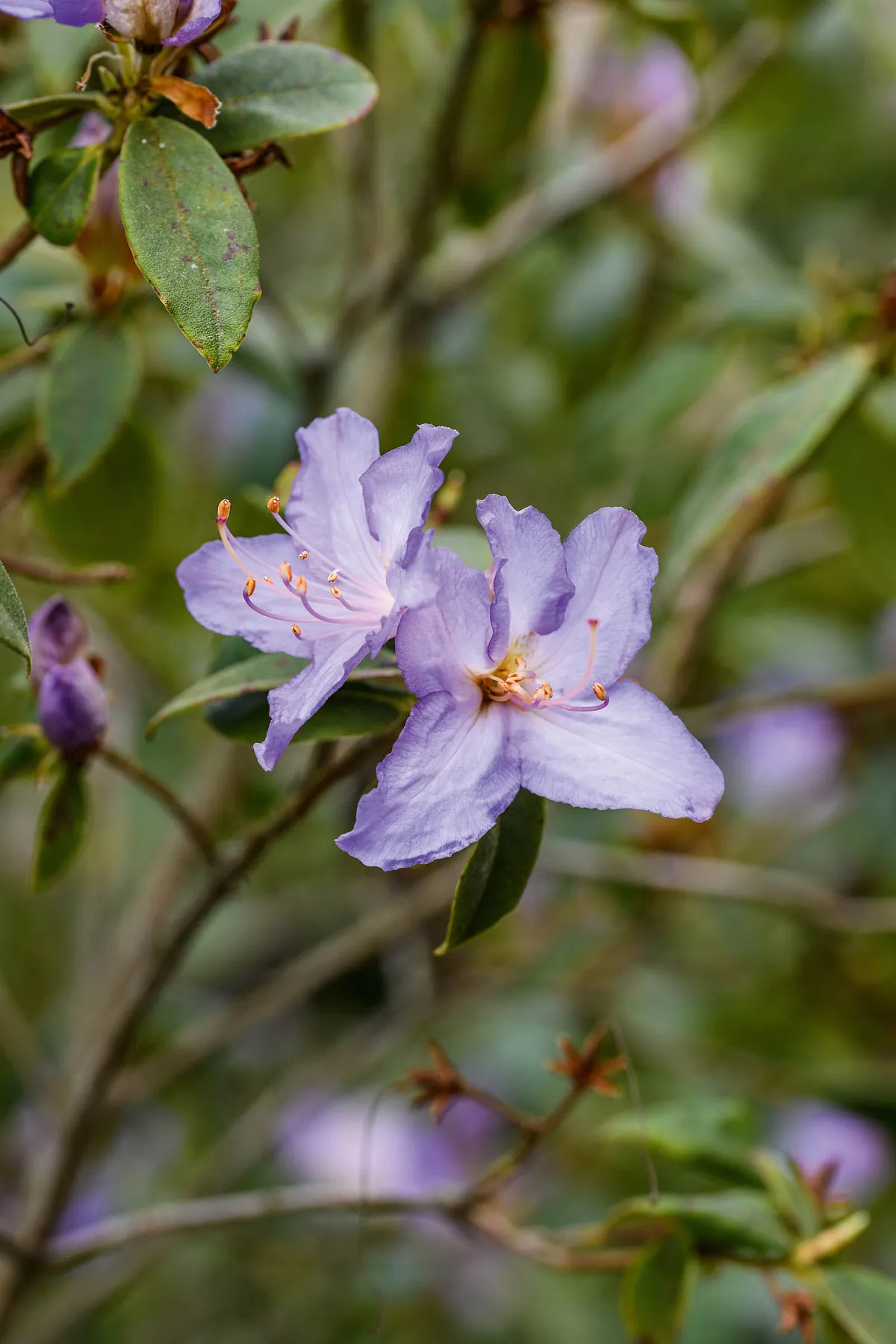
A lovely rhododendron with flowers that range from white to violet blue, and this is a splendid pale lavender form. Works best as a woodland shrub under light shade in humus-rich soil. Its soft blue flowers stand out especially well in the shade, looking stunning among bluebells and the fresh greens of spring. Will also thrive in full sun and is quite easy to grow provided it has shelter and soil with a pH between 4.5 and 6, but it can be shy to flower in cooler gardens.
Height and spread 2m x 1.5m in ten years. Origin China. Conditions Moist but well-drained, acidic soil; light shade or full sun. Hardiness RHS H4, USDA 6a-10b. Season of interest April – May.
Recommended by head gardener Tom Coward.
Limonium platyphyllum

Surely this plant is due a garden revival? It baffles me why people currently don’t grow it more often. Limonium is very tolerant of drier conditions and exposed sites, for those of us who struggle with such conditions. I first encountered sea lavender, many years ago, as a cut flower, and saw its potential to associate with a number of other garden plants. I now use it among roses at the front of the border, where its purple, firework-like flowers shroud the roses’ bare bases. As its blooms fade, they leave a graceful seedhead, which does not need to be hastily tidied away.
Height 50cm-1m. Origin Asia, southeast and central Europe. Conditions Free-draining soil, tolerant of chalk in sun or partial shade. Hardiness RHS H7, USDA 3a-9b. Season of interest July and August.
Recommended by head gardener Tom Brown.
Nigella papillosa ‘Delft Blue’
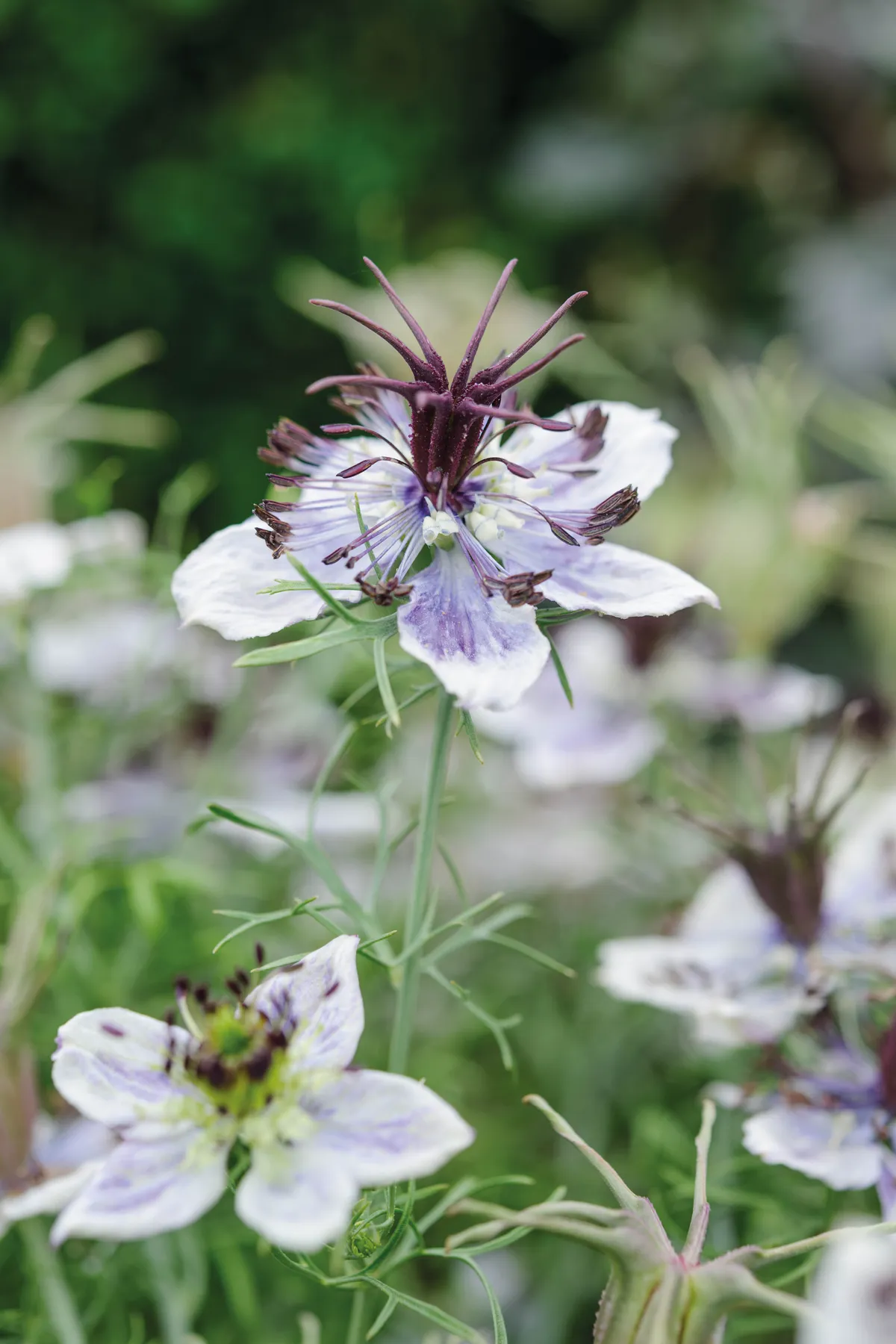
Once you’ve tried growing Nigella papillosa cultivars you may not want to return to the more familiar Nigella damascena. The beauty of the papillosa nigellas lies both in their exaggerated flowers and their subsequent seedheads, which are simply stunning in their own right and look great in borders. The flowers are unusual with bicoloured blooms of white and deep blue on sturdy stems. Nigellas can be equally successful directly sown into a border or started off in modules and then planted out when the plants are large enough.
Height 50cm. Origin Garden origin (species from Spain and North Africa). Conditions Reasonable soil; full sun. Hardiness RHS H3, USDA 2a-11. Season of interest June until August from a spring sowing.
Recommended by head gardener Tom Brown.
Penstemon ‘Raven’

Among the plethora of penstemons currently at our disposal, this classic cultivar is one that has stood the test of time, and rightly so. Tubular, dark-purple flowers appear throughout the summer and into the autumn and the intensity of the flowers contrast well with vibrant reds, such as Echinacea ‘Tomato Soup’ or Achillea millefolium ‘Red Velvet’. If your garden is in something of a cold spot, strike semi-ripe wood cuttings and overwinter in a frost-free place to ensure successive garden performance for years to come. AGM.
Height 50cm-1m. Origin Garden origin (species from America and Mexico). Conditions Fertile, free-draining soil; full sun. Hardiness RHS H3, USDA 6a-9b. Season of interest Summer until first frosts.
Recommended by head gardener Tom Brown.
Looking for more on penstemon?
Agapanthus inapertus subsp. hollandii

Agapanthus must be familiar to almost any gardener, and there are a bewildering number of species and cultivars available in varying shades of blue or white. I must admit I did catch the collecting bug and grow well over a 100 different types, varying not only in colour but in size from 25cm to 1.5m, and in flower form. This subspecies is one of the most reliable, in the middle of the height range, with good strong stems carrying the semi-pendulous flowers of a good mid blue. Summer without agapanthus, just wouldn’t be summer for me.
Height 90cm-1.2m. Origin South Africa. Conditions Well-drained soil; full sun to part shade. Hardiness RHS H5, USDA 7a-10b. Season of interest Late summer.
Recommended by plantsman and owner of Wildside, Keith Wiley.
Angelica sylvestris 'Purpurea'
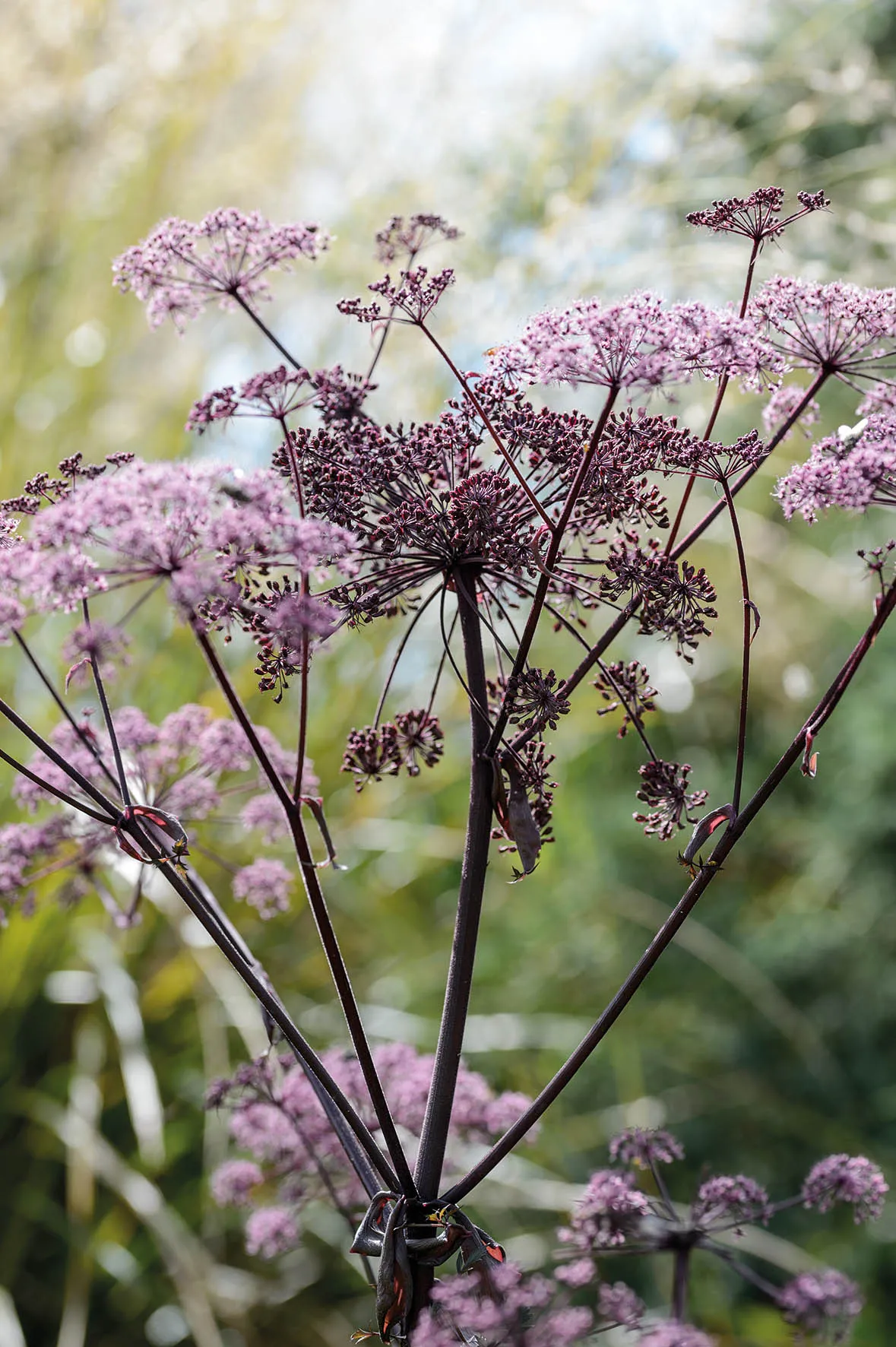
The shape and form of umbellifers is generally reminiscent of the cow parsley of UK hedgerows, and using this plant form in our gardens lends our plantings a naturalistic element. This purple-leaved cultivar of the UK’s native wild angelica is less vigorous than its green counterpart. Both are biennial or short-lived perennials, but will willingly self-seed. The purple form will only throw a percentage of its seedlings as purple, and left unchecked the vast majority will soon be predominantly green, so I remove green seedlings.
Height 90cm-1.2m. Origin Garden (species UK native). Conditions Moisture-retentive soil; full sun to part shade. Hardiness RHS H5, USDA 4a-9b. Season of interest Summer.
Recommended by plantsman and owner of Wildside, Keith Wiley.
Hydrangea aspera (Villosa Group)
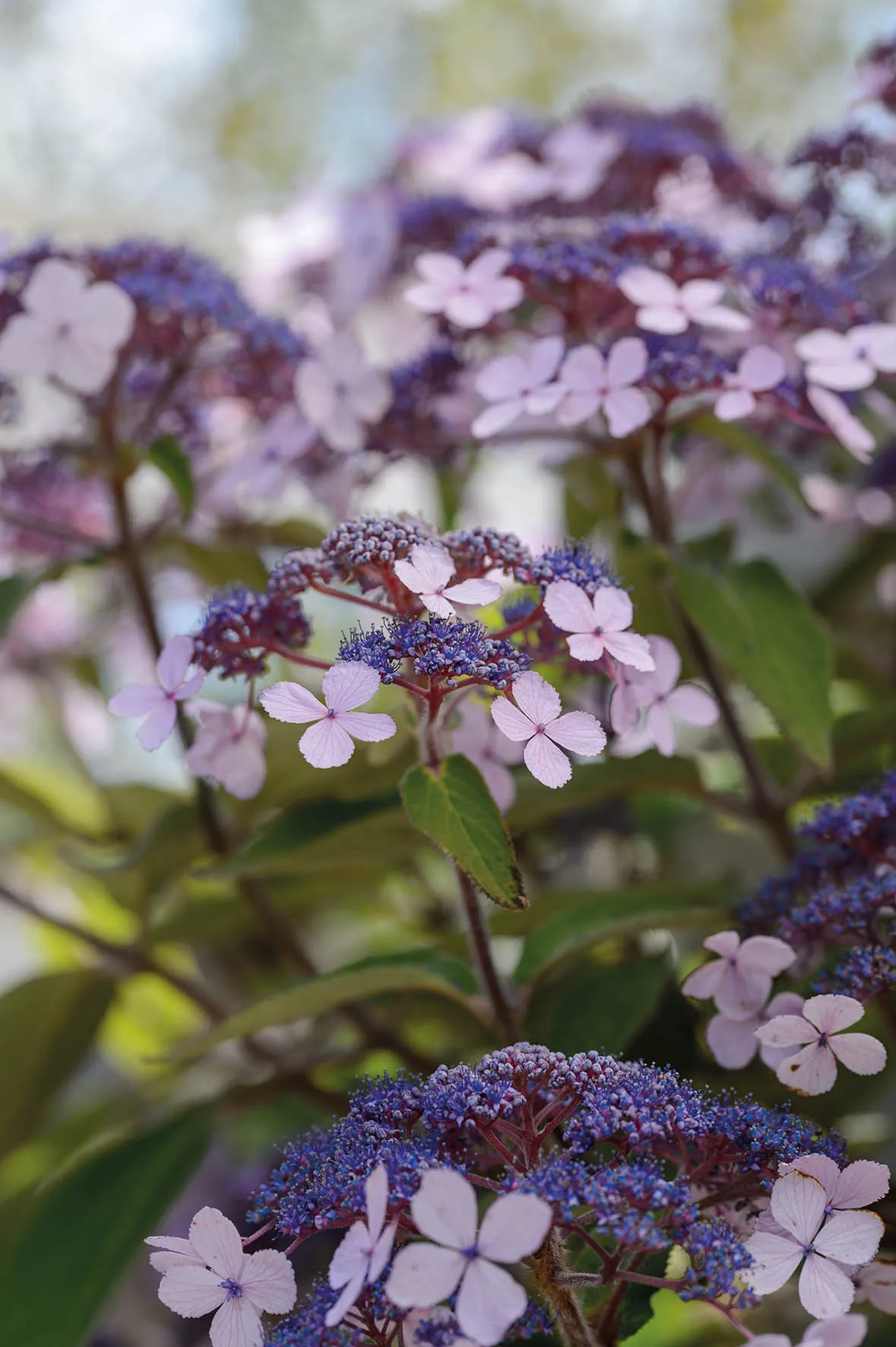
I have always known this plant as Hydrangea villosa Spinners Form after the Hampshire garden of that name where I bought it. Peter Chappell, the then owner, thought the sterile ray florets were more pink than the normal form, and it certainly is very reliably floriferous with much narrower, thinner-textured leaves than H. aspera, under which banner the botanists have now assigned it. Given space and partial shade, it will make an open, rounded shrub with distinctive, silvery brown flaking trunks, very different to most lacecap hydrangeas.
Height 3m. Origin China, northern India, Vietnam. Conditions Moist, well-drained soil; part shade. Hardiness RHS H4, USDA 6a-9b. Season of interest Summer.
Recommended by plantsman and owner of Wildside, Keith Wiley.
Succisa pratensis
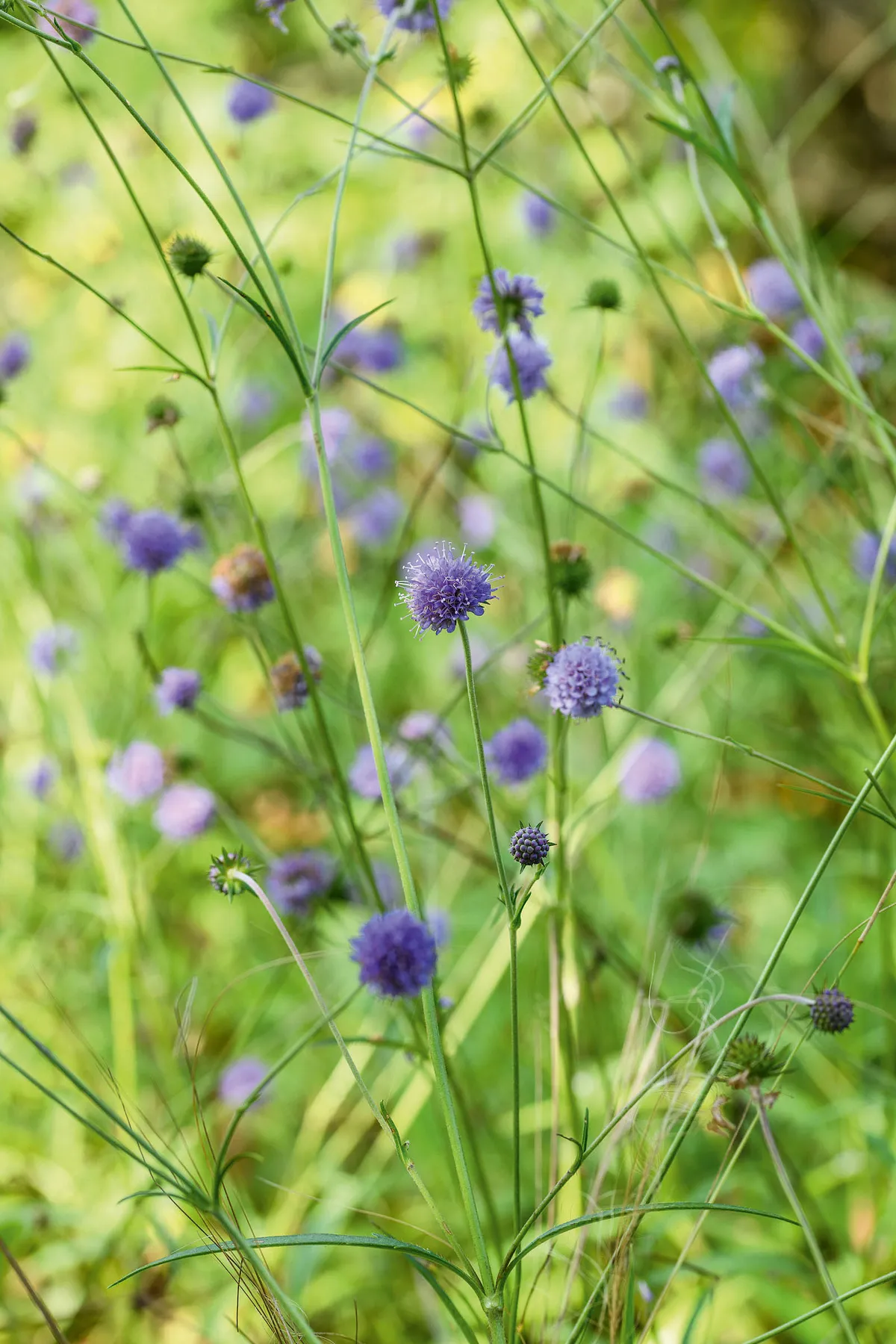
The devil’s bit scabious is a beautiful wildflower found in meadows and hedgerows throughout the UK, preferring damper, clay soils. At Gravetye it is abundant, creating a violet-blue mist in our meadows at the end of the season, delaying the mowing until October. It is also a beautiful addition to borders and shrubberies, and makes an excellent combination in the wild garden with Crocosmia ‘Citronella’. Seed is best sown in autumn and planted out as plugs in the spring, but it can also be sown direct.
Height and spread 1m x 50cm. Origin British Isles, western and central Europe. Conditions Moisture-retentive soil; full sun or partial shade. Hardiness RHS H7, USDA 5a-8b. Season of interest September – October.
Recommended by head gardener Tom Coward.
Scilla peruviana

Gardeners make me green with envy when their plots are sheltered enough to grow this magnificent Scilla outside. As I garden in a frost pocket, I am restricted to growing this bulb in a pot and must protect it from the extremes of wet and cold during the winter. With a little protection under glass, however, it will flower happily in March. Allow to dry out between watering and give it a period of dry dormancy during the summer. Grows well in chalk and any free-draining soil outside in a sheltered, sunny position.
Height 30-40cm. Origin Iberian Peninsula, Italy and northwest Africa. Conditions Sheltered, free-draining soil; sun or under glass. Hardiness RHS H4, USDA 7a-10b. Season From early spring under glass.
Recommended by head gardener Tom Brown.
Here's our grow guide to scilla
Lunaria annua 'Corfu Blue'
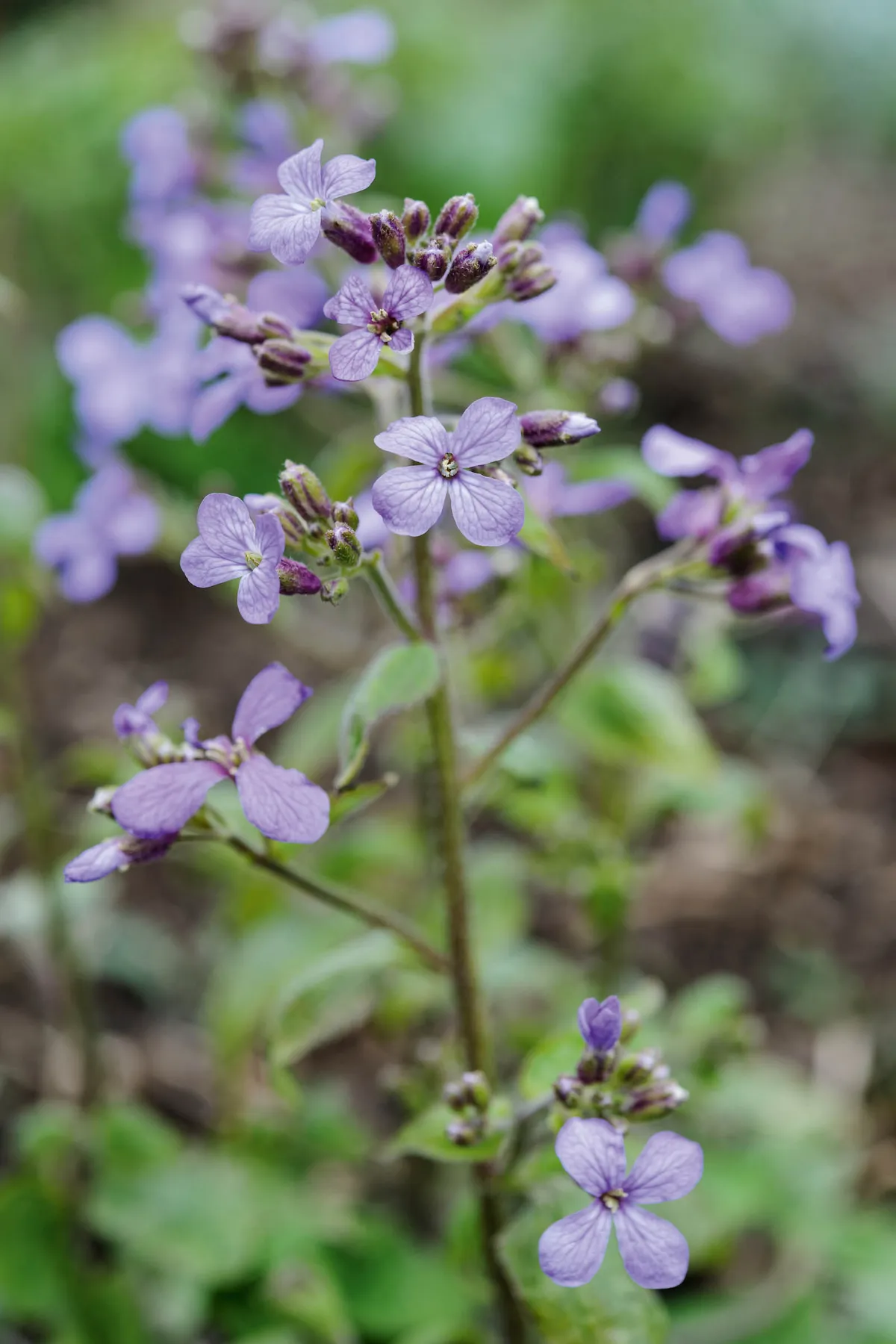
This is a new favourite of mine. It is a delight in the spring with a delicate and more compact, branched habit than the more widely known species Lunaria annua (honesty). For best results plant at the front of a border, away from competition, where it will associate beautifully with Elaeagnus ‘Quicksilver’ and Anthriscus sylvestris ‘Ravenswing’. If deadheaded, it will repeat flower, but allow some later flowers to develop into attractive translucent seedheads in autumn, and collect the seed for sowing in late summer. AGM.
Height 50cm. Origin Corfu, species southern Europe. Conditions Moist but well-drained soil in sun for best flowering performance. Hardiness RHS H6, USDA 5a-9b. Season Late spring.
Recommended by head gardener Tom Brown.
Iris 'Silver Edge'
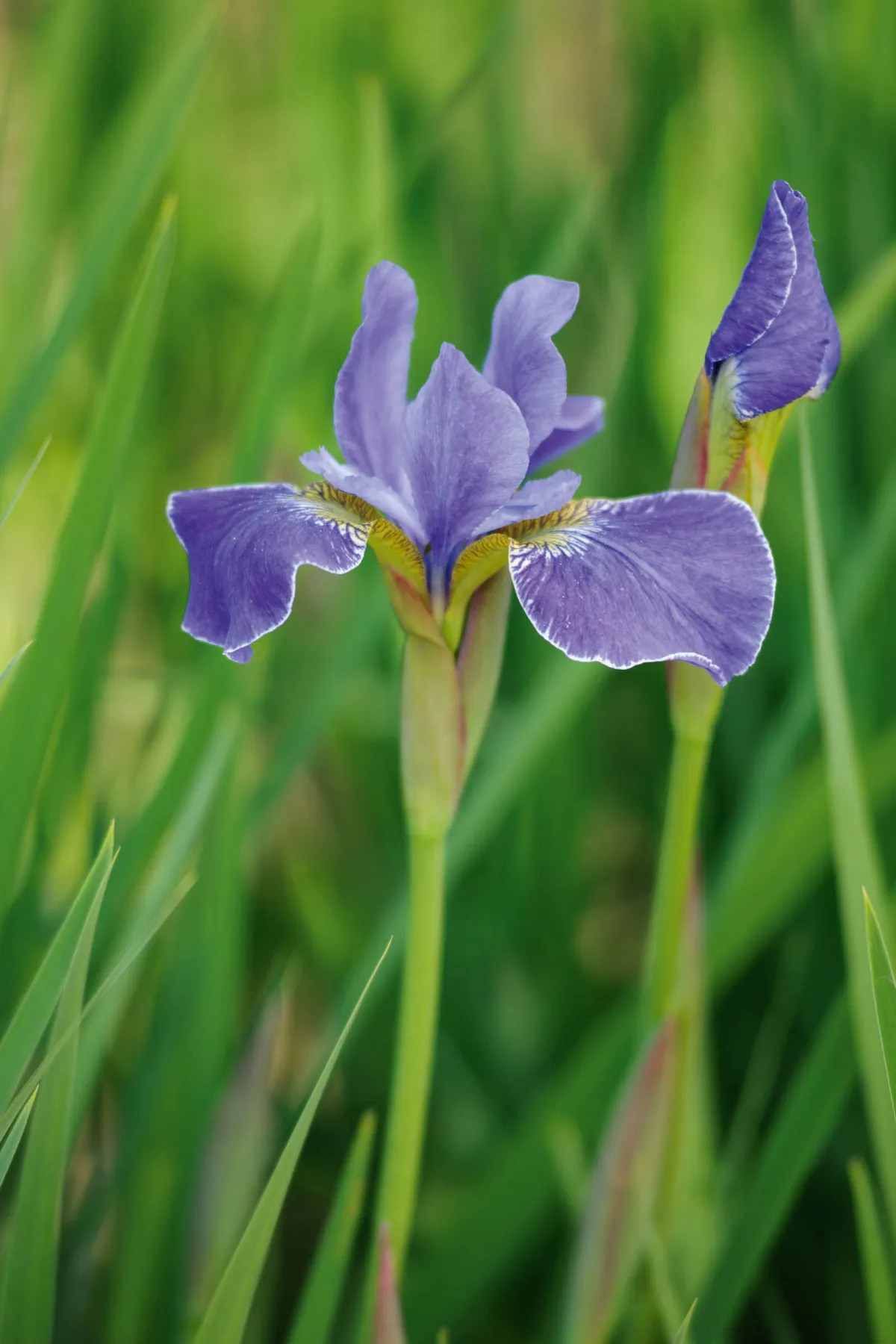
If you have space for just one Siberian iris then ‘Silver Edge’ is hard to beat. Its abundant and large flowers are a rich blue colour and have a distinctive silver edge that gives them a real presence. They appear above grass-like foliage in May and June, and are most floriferous if they are given a sun-drenched position with a reasonable level of moisture during the summer. They’ll tolerate shade and drier conditions once they’re established but you’ll find that their performance will be a little compromised as a result. AGM.
Height 1m. Origin Garden (species central Europe to southeastern Russia). Conditions Fertile, moist but well-drained soil; full sun. Hardiness RHS H7, USDA 3a-8b. Season of interest Early summer
Recommended by head gardener Tom Brown.
Here's more expert advice on irises
Allium 'Purple Rain'
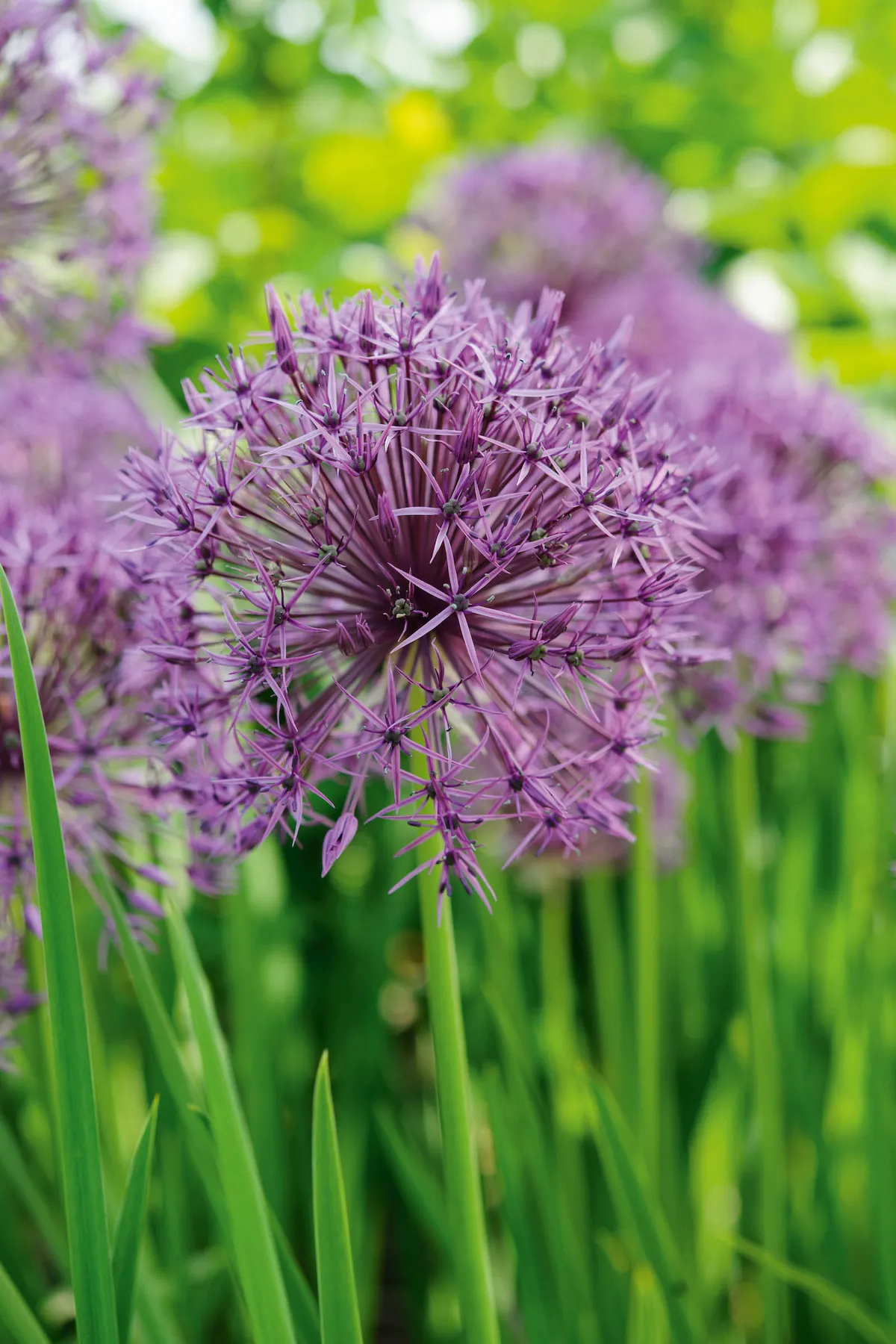
Like many gardeners I know, I’m always on the look out for reliable, perennial performance in an allium. I’ve played the allium lottery for many years, but with this one I’ve hit the jackpot. It’s a cultivar of Allium jesdianum, which has proven to be reliable in my garden, not only producing a good-sized flower but reappearing after some of the toughest winters, increasing in number each time. I successfully associate this cultivar with roses, perennials and grasses in naturalised and formal situations. Worth trying if you fancy a change from the ever popular ‘Purple Sensation’. AGM.
Height 60cm. Origin Garden (species Iraq and Iran). Conditions Moist, free-draining soil; full sun. Hardiness RHS H5, USDA 4a-9b Season of interest Early summer
Recommended by head gardener Tom Brown.
Iris ‘Jane Phillips’

I use ‘Jane Phillips’ a lot. Its large and scented, pale-blue flowers appear profusely in early summer, making it perfect for cutting. To maintain your display, make sure that the rhizomes are exposed to the sun and look to divide your clumps every three to four years after flowering. Deservedly popular, this tall-bearded cultivar grows to around one metre in height, making it perfect for use as an accent of early colour in a border or gravelled area. Make sure the rhizomes avoid both competition and shade in high summer. AGM.
Height 1m. Origin Garden (Mediterranean). Conditions Free-draining soil; full sun. Hardiness RHS H7, USDA 3a-10b. Season of interest Late spring and early summer.
Recommended by head gardener Tom Brown.
Salvia 'Amistad'
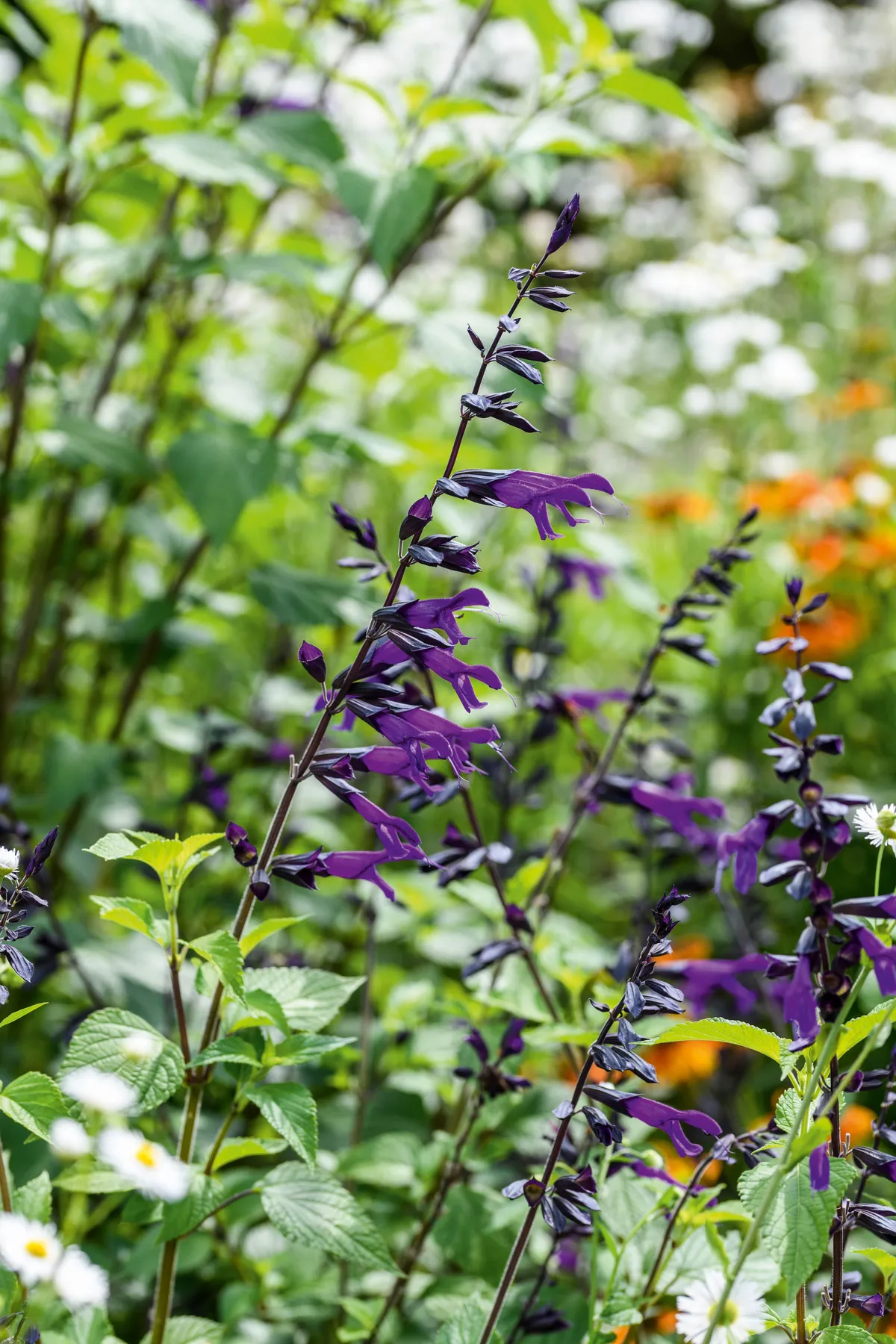
A beautiful and incredibly floriferous salvia that will continue flowering until the first frosts. It survives the winter at Gravetye, although benefits from autumn mulching for a little extra protection. Its winter skeleton will offer some structure, although it usually dies back to the ground and should be cut back hard in early spring. We take cuttings between July and August, overwintering in a cool greenhouse and find these make the best plants. After hardening off they can be planted as gaps open up. AGM.
Height and spread 1.2m x 50cm. Origin Garden (species South America). Conditions Moist but well-drained chalk, loam, sand; full sun in a sheltered spot. Best plants are produced by overwintering cuttings under glass. Hardiness RHS H3, USDA 9a-11. Season of interest June – November.
Recommended by head gardener Tom Coward.
Eudianthe coeli-rosa 'Blue Angel'
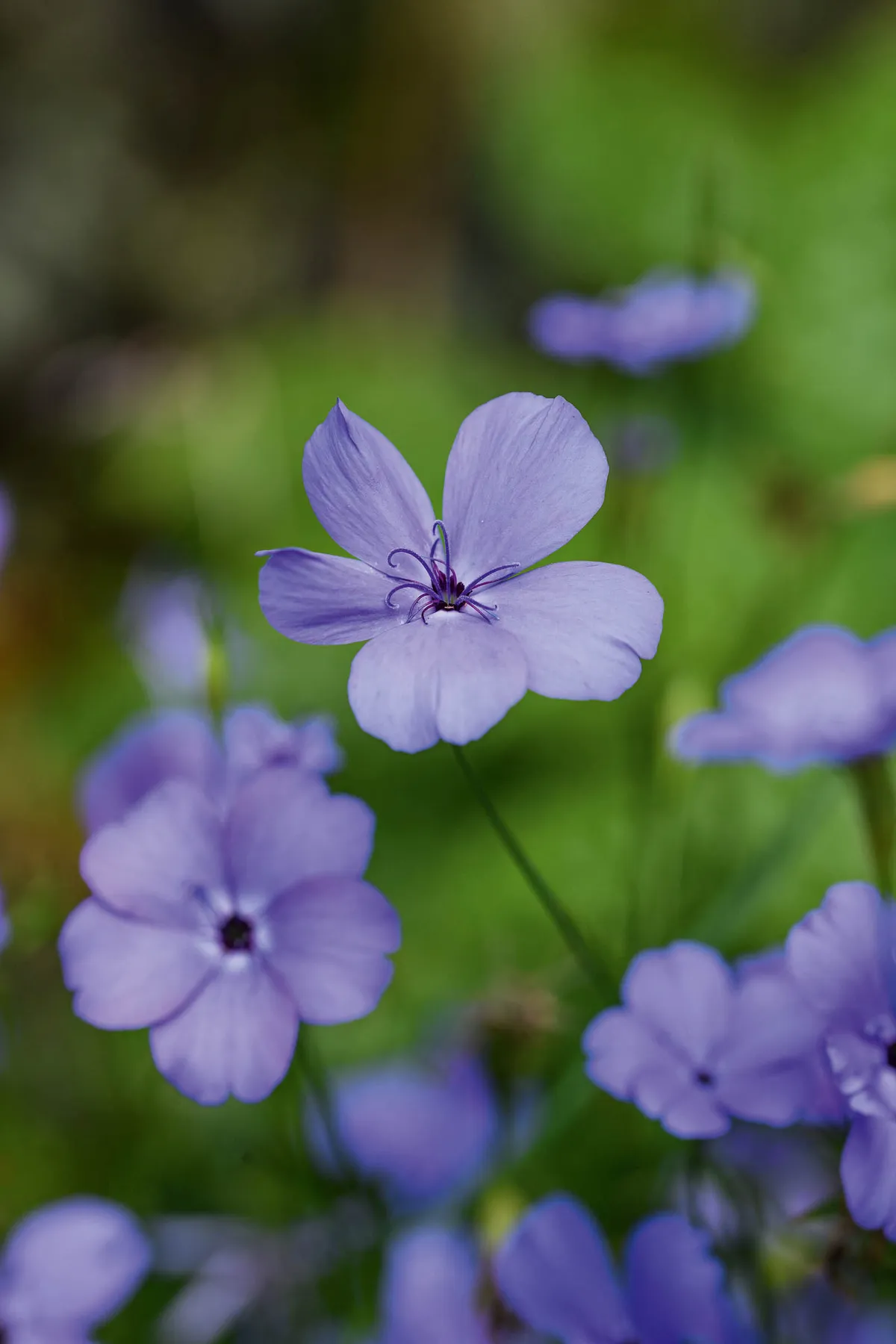
This charming and beautiful hardy annual is a favourite at Gravetye. With its delicate blue flowers on soft, upright, green leaves it has a similar look to flax, only with flowers of a richer blue and a longer flowering season. We generally sow in autumn and overwinter the plants in a cold frame for spring planting. These tend to make the best plants but we also do a spring sowing to grow plants that flower a little later in the season. It works well in large drifts as well as being squeezed into gaps throughout the border.
Height and spread 30cm x 30cm. Origin Canary Islands, western Mediterranean. Conditions Well-drained chalk or loam; full sun or part shade. Hardiness RHS H5. Season of interest May – July.
Recommended by head gardener Tom Coward.
Berkheya purpurea
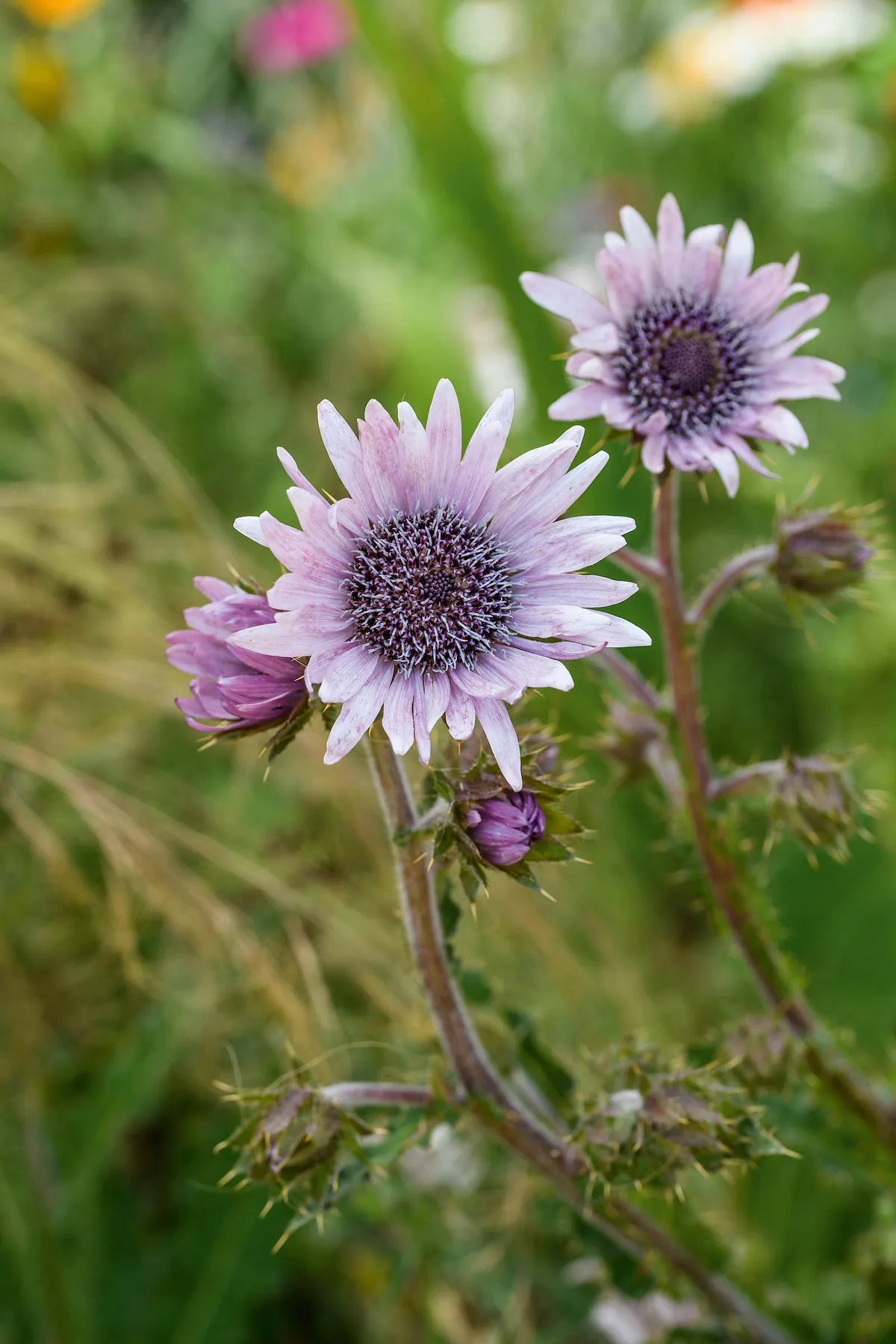
This is an attractive, short-lived perennial from South Africa that has an unusual, thistle-like appearance. It works particularly well for us at the front of our long border where its big, circular, purple daisy flowers contrast beautifully with spikes of Sisyrinchium and Libertia. We generally have our best results from seed sown in autumn, which means that the plants can be grown on into 9cm pots before they are overwintered in a cold frame ahead of a spring planting. Once established it is perfectly hardy for us, flourishing in a free-draining soil.
Height and spread 50cm x 50cm. Origin Mountainous regions of South Africa. Conditions Free-draining soil; full sun. Hardiness RHS H4, USDA 6a-9b. Season of interest June – July.
Recommended by head gardener Tom Coward.
Thalictrum ‘Splendide’

This lovely meadow rue is a recent introduction that appeared spontaneously in the garden of French nurseryman Thierry Delabroye. It is thought to be a hybrid between two Chinese species T. delavayi and T. elegans. As it is a sterile hybrid, it flowers for several weeks longer than either of its parents, providing vast clouds of small, purplish-pink flowers with creamy stamens that contrast with dark, reddish-purple stems. It can grow so tall and flower so profusely that it becomes top heavy and requires judicious staking to prevent it tumbling over into the border.
Height 1.2-1.8m. Origin Spontaneous seedling between Chinese species T. delavayi and T. elegans. Growing conditions Moisture-retentive soil; sun or dappled shade. Hardiness RHS H7, USDA 3a-8b. Season of interest Summer – autumn.
Recommended by plantswoman and ecologist Marina Christopher.
Eryngium x zabelii
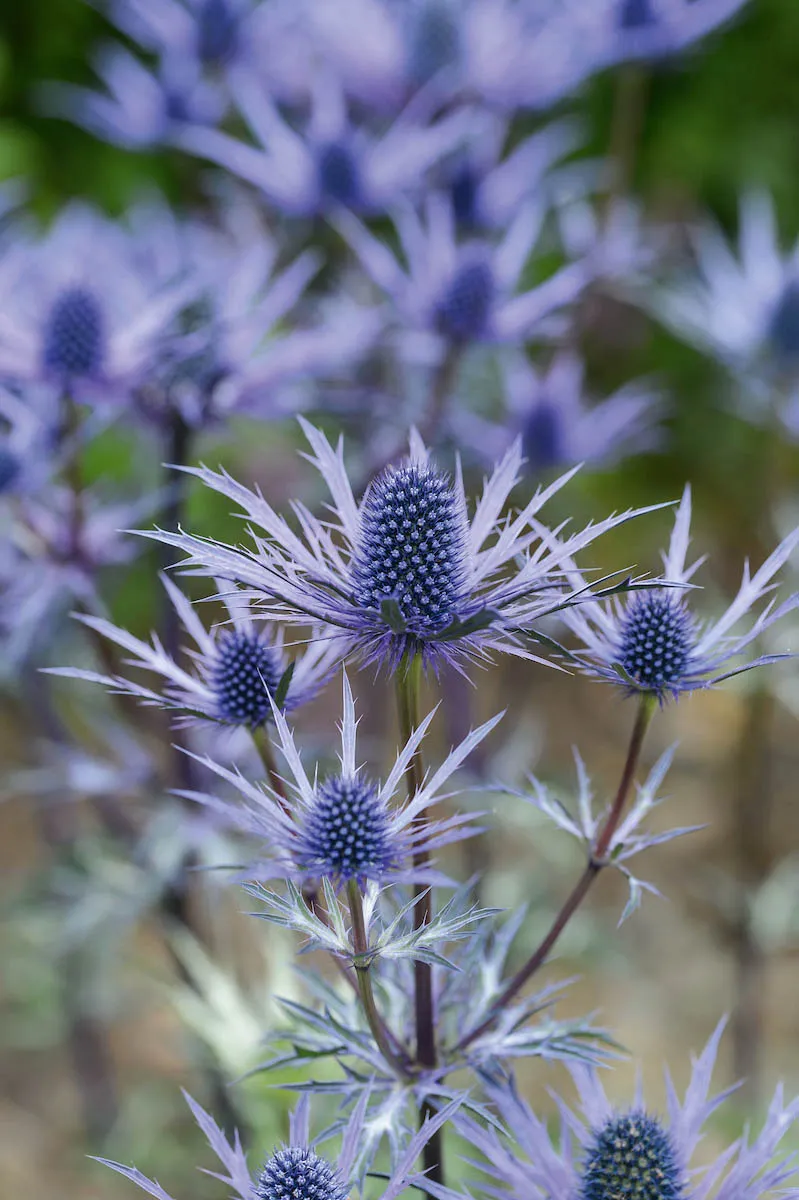
Eryngiums are more commonly known as sea hollies because of their prickly leaves and because the natural habitat of some species is in coastal areas. In a garden setting though, all they ask for is a sunny, well-drained spot, where for many weeks in summer, they will produce their startling, cone-shaped flowerheads surrounded by a ruff of vicious-looking bracts. There are several cultivars available of this hybrid varying slightly in the intensity of the blue, both in the flowerheads and the flower stems, but all are good. Easily propagated by root cuttings in late winter.
Height 60-90cm. Origin Garden origin. Conditions Well-drained soil; full sun. Hardiness RHS H5, USDA 6a-9b. Season of interest Summer.
Recommended by plantsman and owner of Wildside, Keith Wiley.
Here's everything you need to know about eryngiums
Geranium wallichianum ‘Crystal Lake’

Although slower to get going than many geraniums, this has to have one of the prettiest blooms of the geranium tribe. The flowers are a timid lilac in warm weather and become more blue when the weather is cool. Each bloom is decorated with purple striations and dark anthers. It will keep blooming well into the autumn and has a rambling habit, sending flowering stems up, over and through other plants. It does best near the front of the border next to plants that will complement its friendly manner.
Height 1m. Origin Garden origin. Conditions Good garden soil; full sun to light shade but not too hot. Hardiness RHS H6, USDA 4a-8b. Season Summer to autumn.
Recommended by head gardener Mat Reese.
Verbena macdougalii 'Lavender Spires'
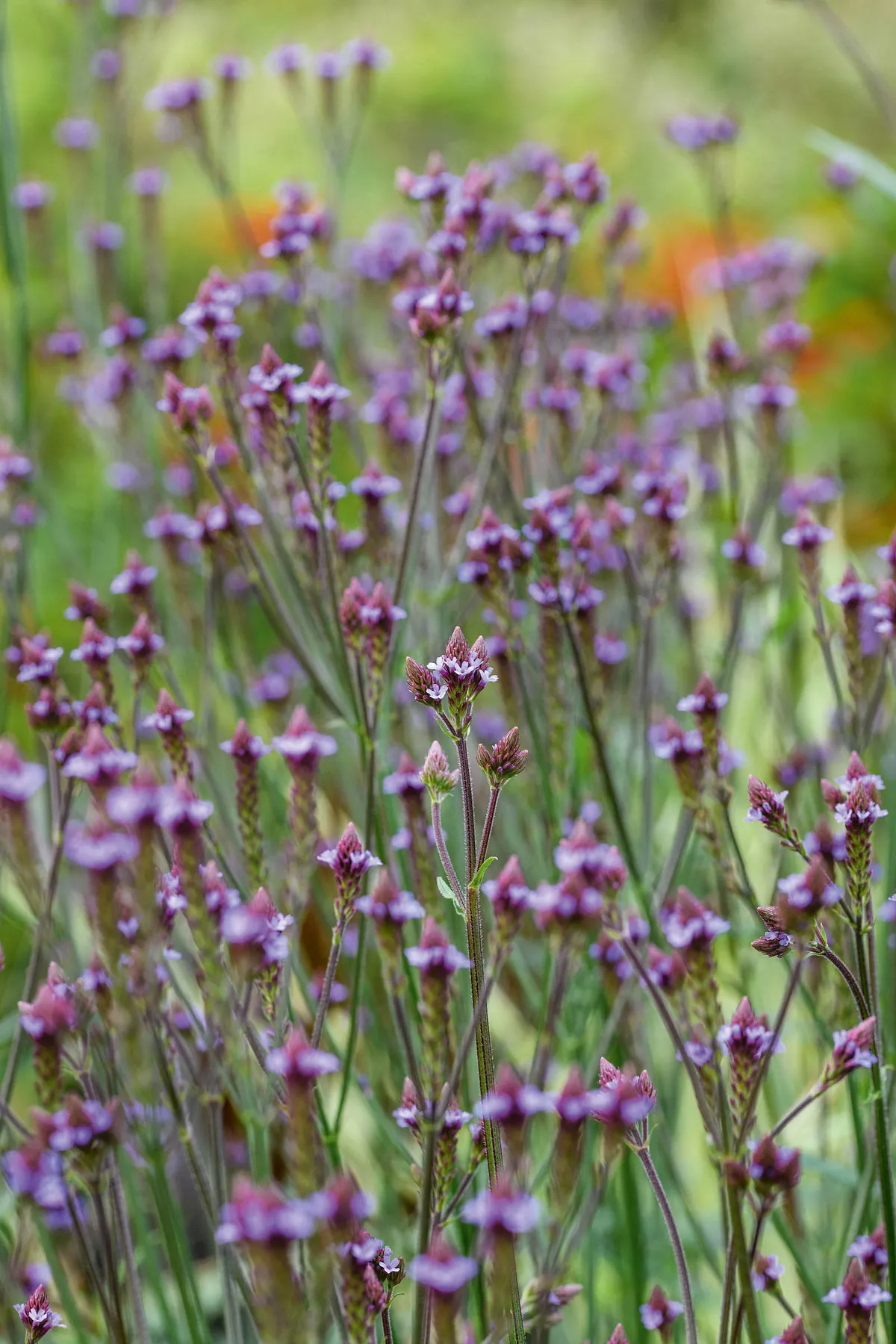
This beautiful, vigorous and useful cultivar was selected by Marina Christopher at her nursery, Phoenix Perennials. It has a long flowering season from June until first frosts and makes a good structural plant through the winter. Unlike its promiscuous relative, Verbena bonariensis, it is sterile, so doesn’t self-seed, making it a more manageable border plant. It’s easily propagated by cuttings rooted in a glass of water. We cut plants back by half in June to keep them in proportion and stop them from flopping.
Height and spread 2m x 45cm. Origin Garden (species southwest USA and Mexico). Conditions Moist but well-drained soil; full sun or partial shade. Hardiness RHS H5, USDA 9. Season of interest July – November.
Recommended by head gardener Tom Coward.
Here's our expert guide to verbena
Salvia leucantha
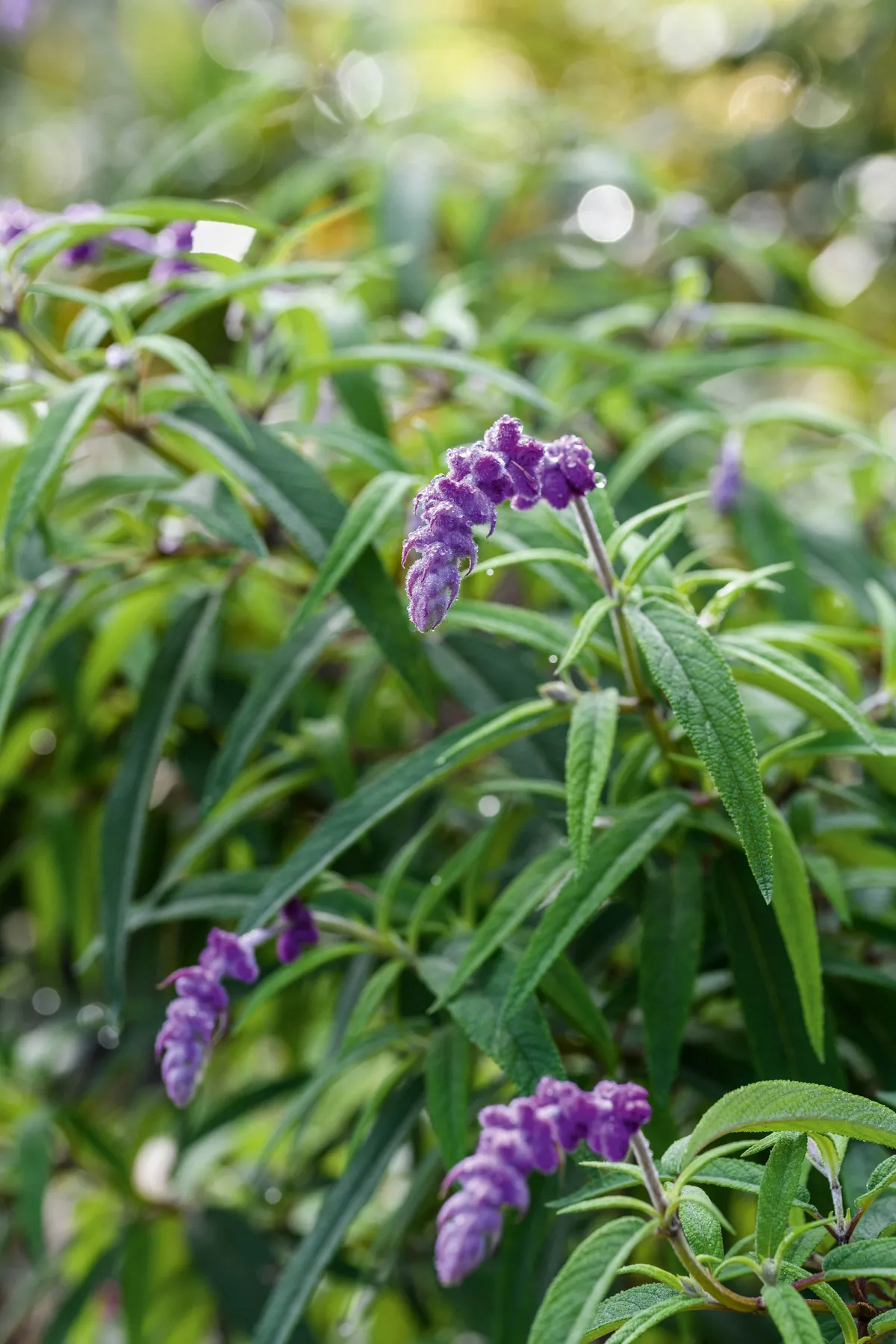
Many of the New World salvias have the most wonderful long-flowering season and S. leucantha is no exception, blooming throughout summer and deep into autumn with arching branches bearing the most extraordinary furry, purple and white flowers. Unfortunately, this lovely thing is tender but worth lifting and overwintering in a frost-free greenhouse. Cuttings are easy to root and best taken in July to make a good flowering plant the following year. Makes an excellent combination alongside the red Helenium ‘Moerheim Beauty’. AGM.
Height and spread 1m x 1m. Origin Mexico. Conditions Moist but well-drained soil; full sun, sheltered position (may be hardy through winter if not too cold or wet). Hardiness RHS H2, USDA 8a-10b. Season of interest May – November.
Recommended by head gardener Tom Coward.
Crocus speciosus
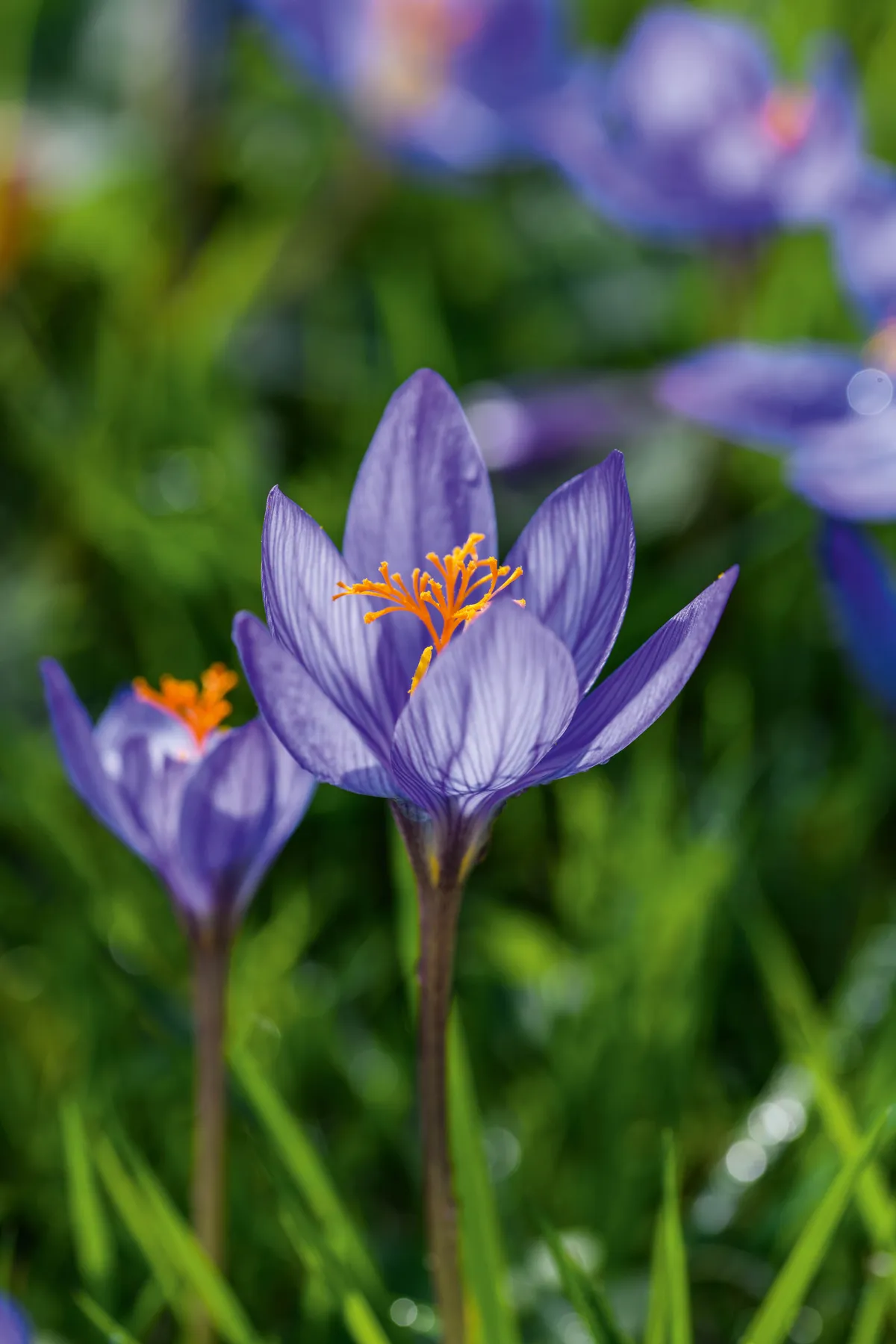
This is a wonderful autumn-flowering crocus that deserves to be planted more often. Its striking flowers appear throughout September and October, sporting the most gorgeous, delicately veined, blue-mauve petals. It will work well dotted through the front of a border, and is also fun grown in a terracotta pot to be shown off by the door. But it is possibly most exciting when naturalised in a meadow. At Gravetye we have the most wonderful display that times perfectly just after the hay is cut and is clearly spreading itself by seed – a true sign of a happy plant. AGM.
Height and spread 10cm x 10cm. Origin Turkey, northern Iran and Crimea. Conditions Will tolerate damp soil but not waterlogged soil; sun or part shade. Hardiness RHS H6, USDA 3a-10b. Season of interest September – October.
Recommended by head gardener Tom Coward.
Consolida regalis ‘Sydney Blue Picotee’
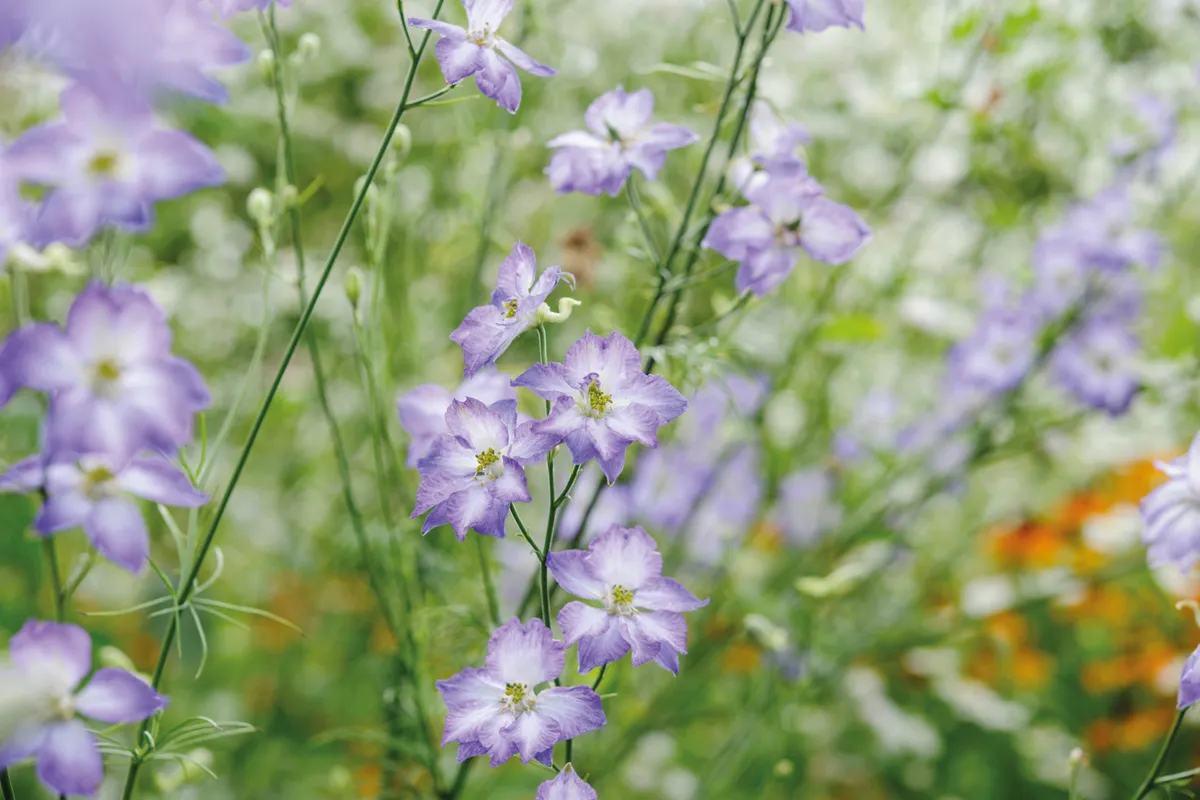
Most gardeners are familiar with the statuesque perennial delphiniums, but fewer know of the tribe of annual delphiniums called Consolida, or larkspurs. They can be quite useful where their larger cousins may look ungainly, as they are generally smaller and more delicate. This pretty cultivar with thin, branching spires of large, white flowers, edged with pale blue, looks very good when partnered with flat umbels, such as Ammi majus. Prefers lighter soils and is deserving of a cane for support.
Height 1.3m. Origin Garden origin. Conditions Any garden soil that is not saturated; full sun. Hardiness RHS H6. Season Summer
Recommended by head gardener Mat Reese.
Cochliasanthus caracalla

Although I grow this vine each year, from seed, it can be perennial if given a little protection from frosts. Often sold under its previous name of Vigna caracalla it is commonly known as the corkscrew vine on account of its exquisite flowers that are tightly coiled like a corkscrew. Their emergence at the end of the summer always causes great excitement. You can successfully grow it in a container or in a conservatory or in a border, provided you apply a potash-based liquid feed throughout the growing period to encourage a strong flowering.
Height 3m. Origin Tropical South America. Conditions Moist, free-draining soil; full sun. Hardiness RHS H2, USDA 10b-12. Season of interest July – October.
Recommended by head gardener Tom Brown.
Gladiolus 'Violetta'

If I had to choose just one gladioli, it would be this one. It makes a great cut flower and has rich, sophisticated flowers, of the deepest purple, that are produced from corms in late summer. The delicacy of these dwarf cultivars allows them to grow in borders without the need for staking and clumsy supports, and I adore the way this cultivar’s flowers work well with so many other garden plants in a border or vase without dominating it. Plant from May until July for continuous colour during late summer and autumn.
Height 1.5m. Origin Garden hybrid (species from South Africa). Conditions Fertile, free-draining soil; full sun. Hardiness RHS H3, USDA 7a-10b. Season of interest Mid to late summer.
Recommended by head gardener Tom Brown.
Symphotrichum 'Little Carlow'
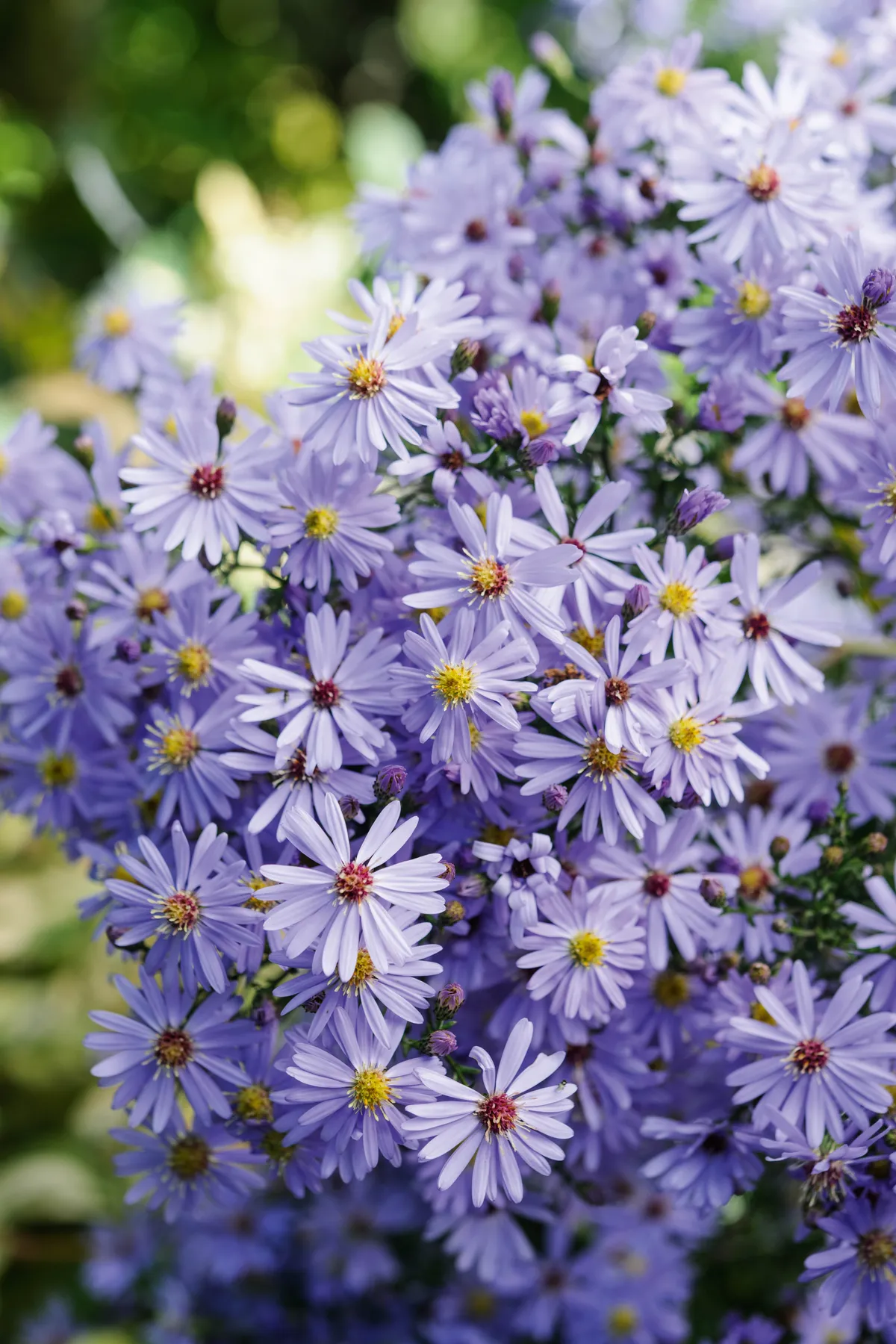
Some Symphyotrichum can be difficult to harmonise with other perennials and shrubs in naturalistic plantings but this much-admired cultivar, with its sprays of soft-blue flowers that appear in abundance in late summer, provides an elegant charm in a number of garden situations, making it one of my favourite plants. I’d recommend a little birch or hazel to support the plant when it’s in full bloom as the sheer weight of the flowers can overwhelm the wiry stems. AGM.
Height 50cm-1m. Origin Garden origin (species from North America). Conditions Moist, fertile, free-draining soil; full sun or partial shade. Hardiness RHS H7, USDA 3a-8b. Season of interest August – September.
Recommended by head gardener Tom Brown.
Soldanella villosa
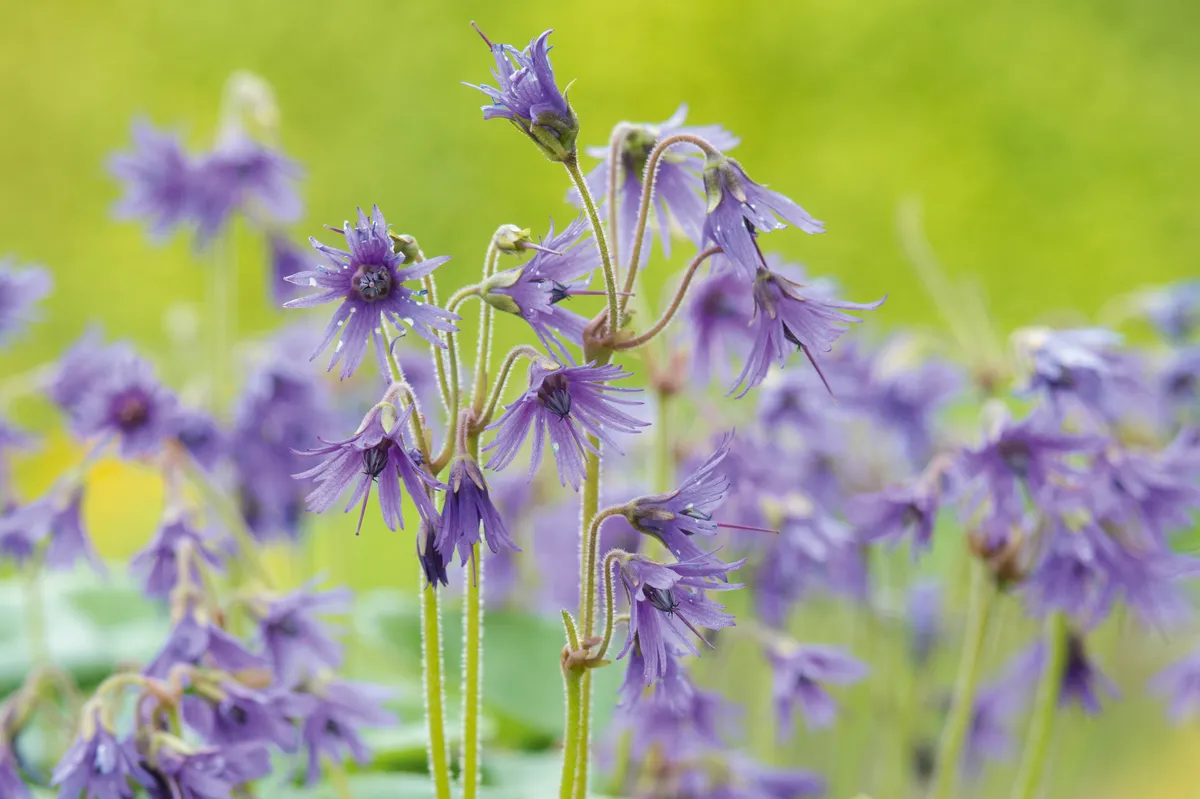
Many alpine plants have the reputation of being picky and difficult to grow, but that couldn’t be further from the truth for this Pyrenean snowbell. Like most mountainous plants – we once saw it growing at an altitude of 2,000m in the Alps – it prefers good drainage, but grows well in our clay soil. Its rounded, evergreen leaves resemble coins – hence its name, which comes from the Italian soldi, meaning money. The flowers look like brush heads standing perkily on thin stalks perky above the round leaves. It’s an excellent plant for the rock garden. AGM*.
Height 20cm. Origin Pyrenees. Conditions Moist but well-drained soil; full sun and part shade. Hardiness RHS H6 † . Season Spring.
Recommended by Dutch nurserywoman Fleur van Zonneveld.